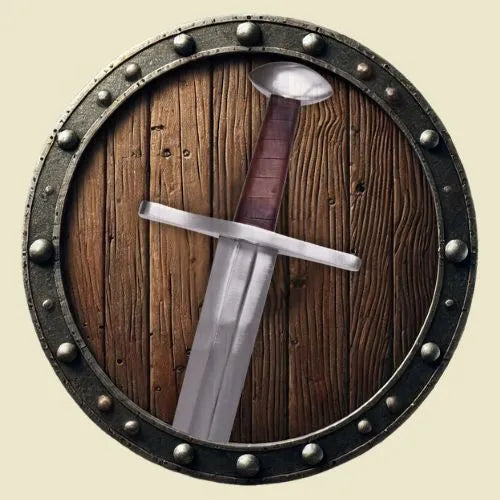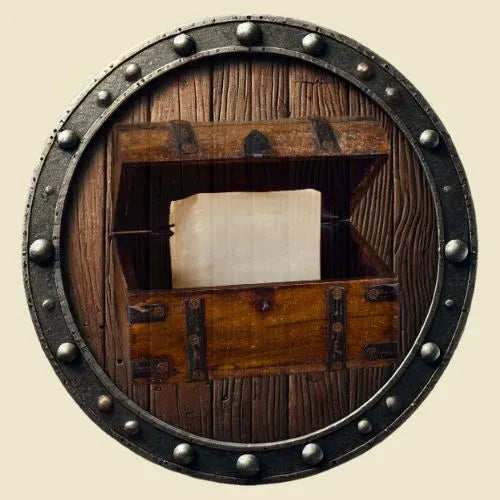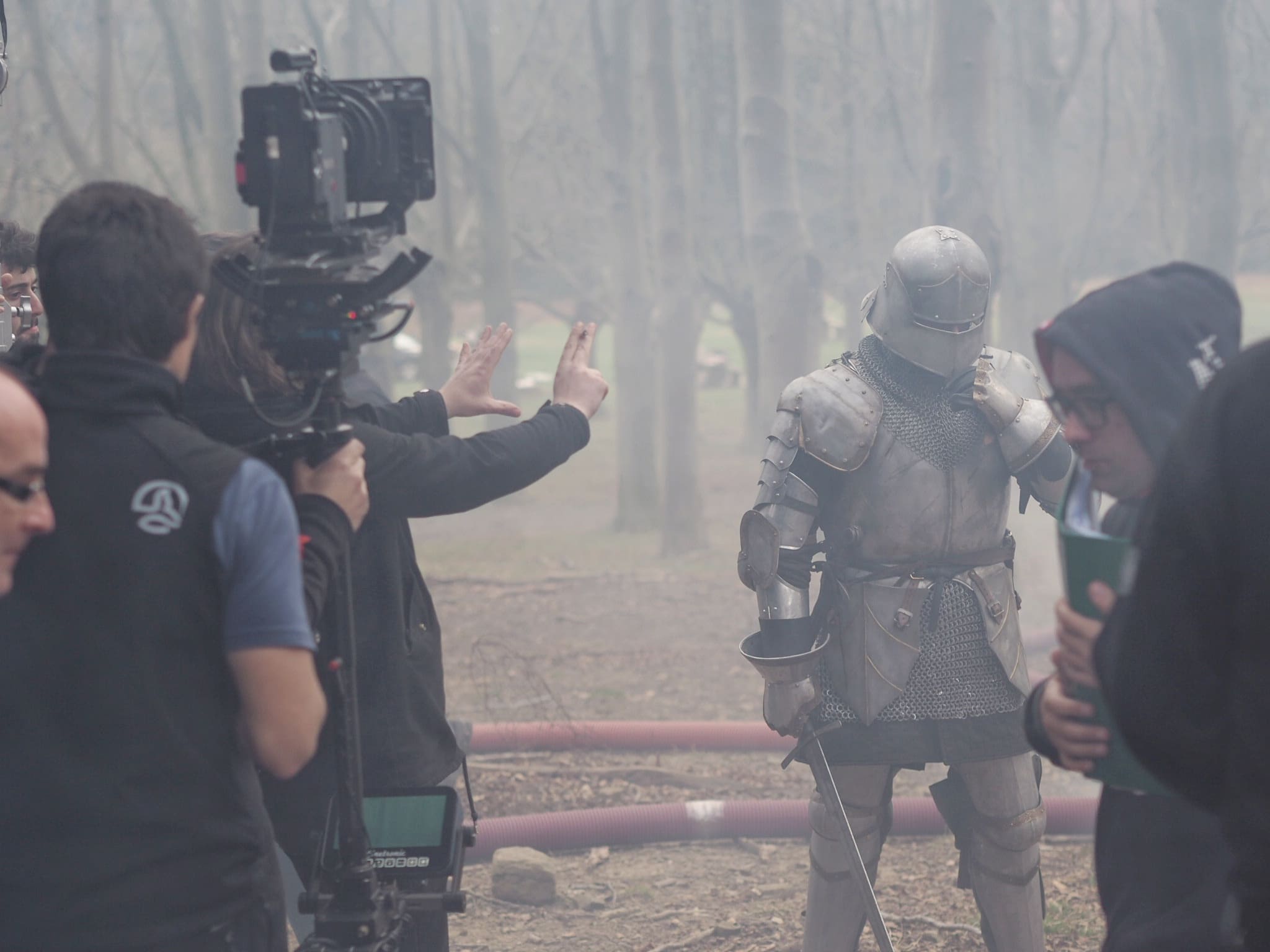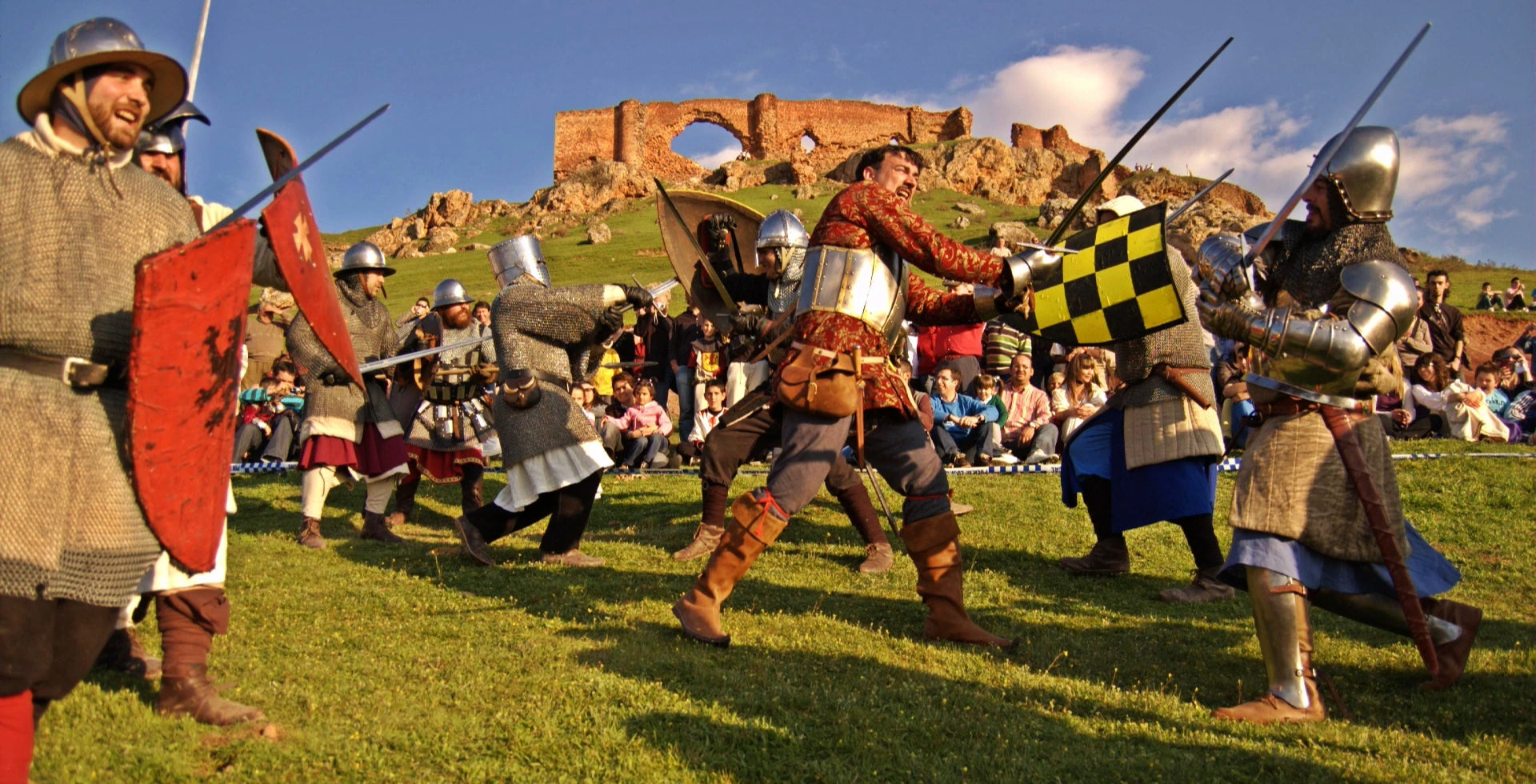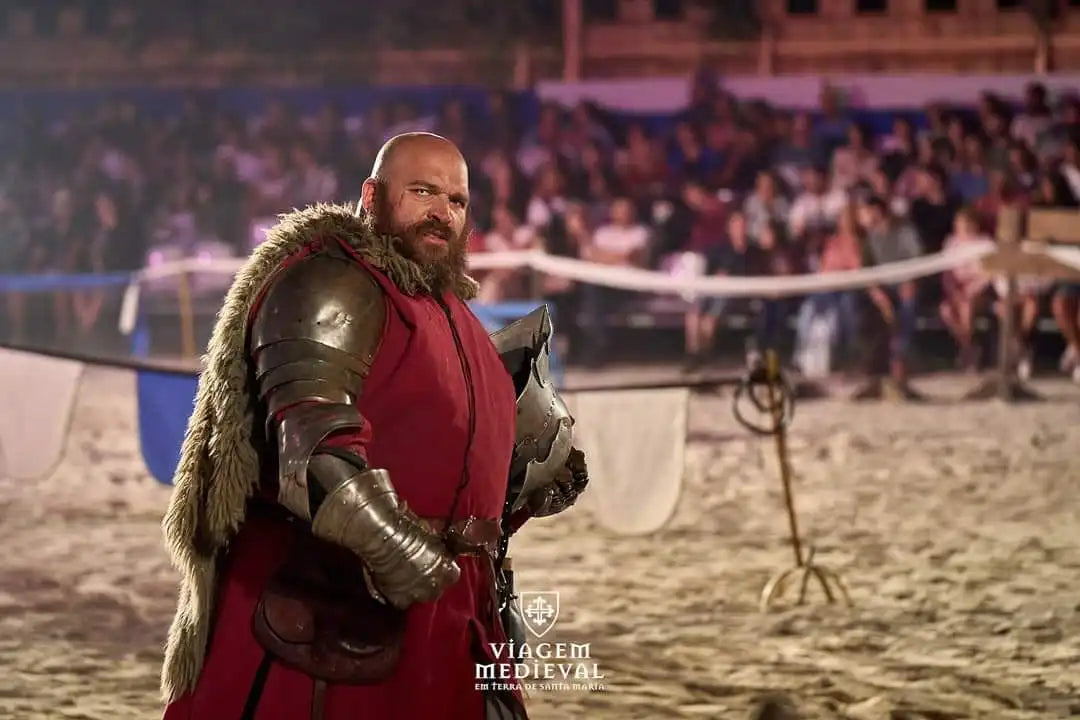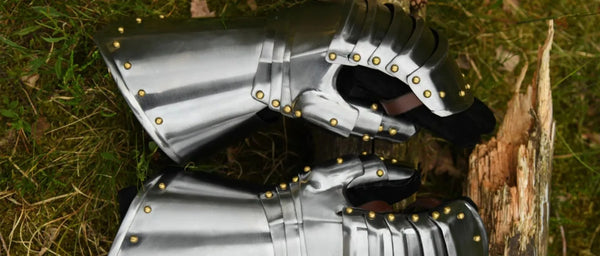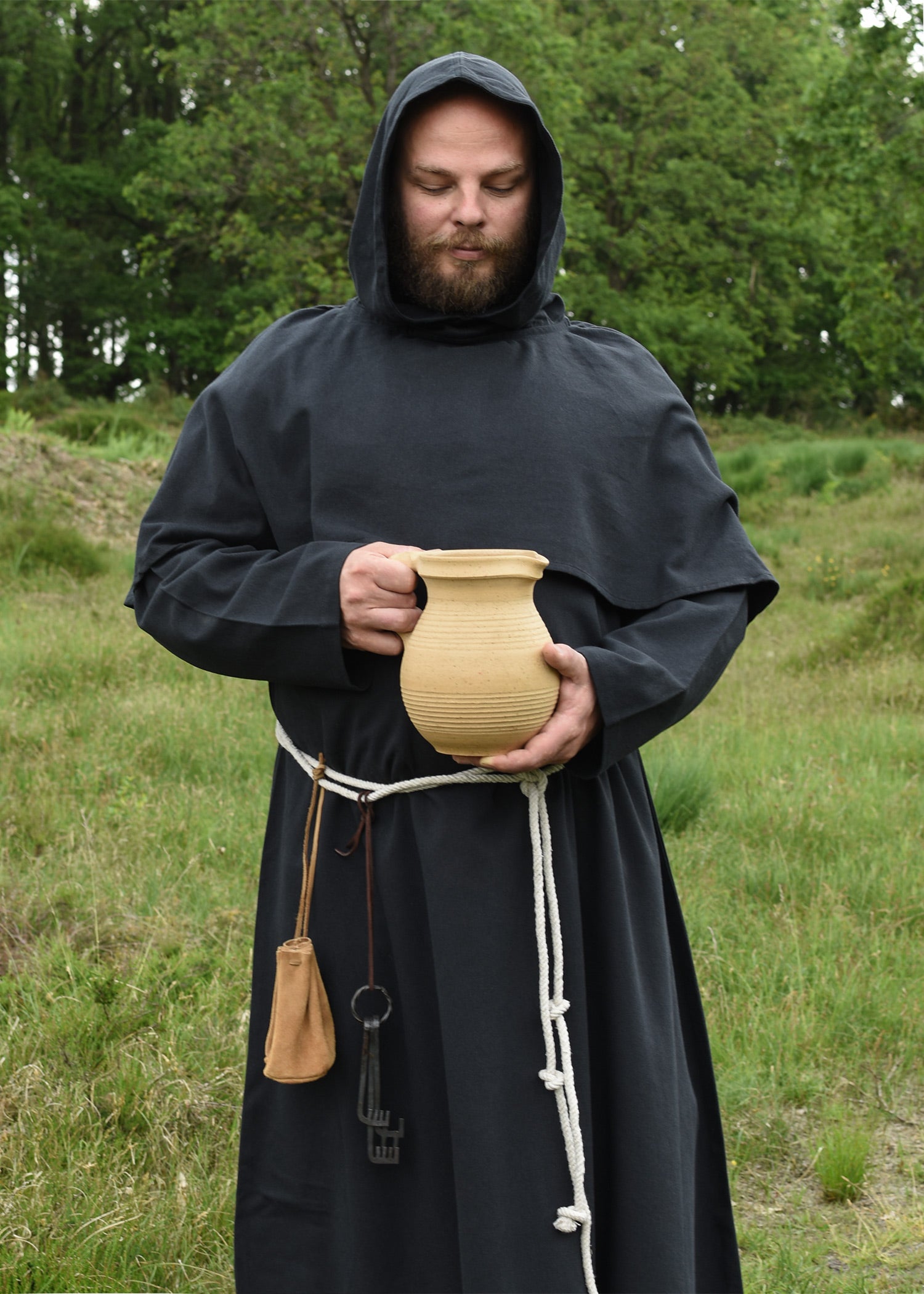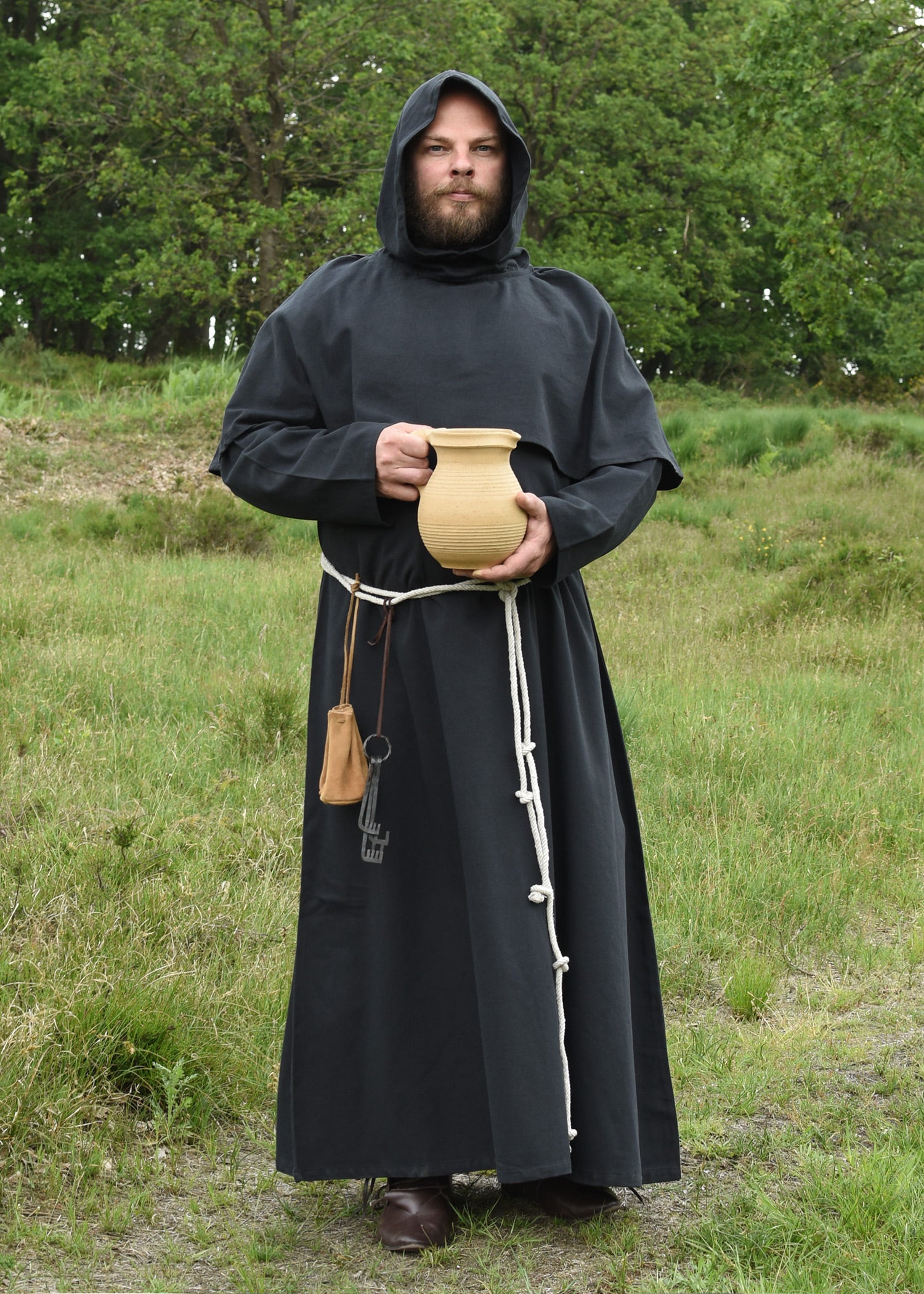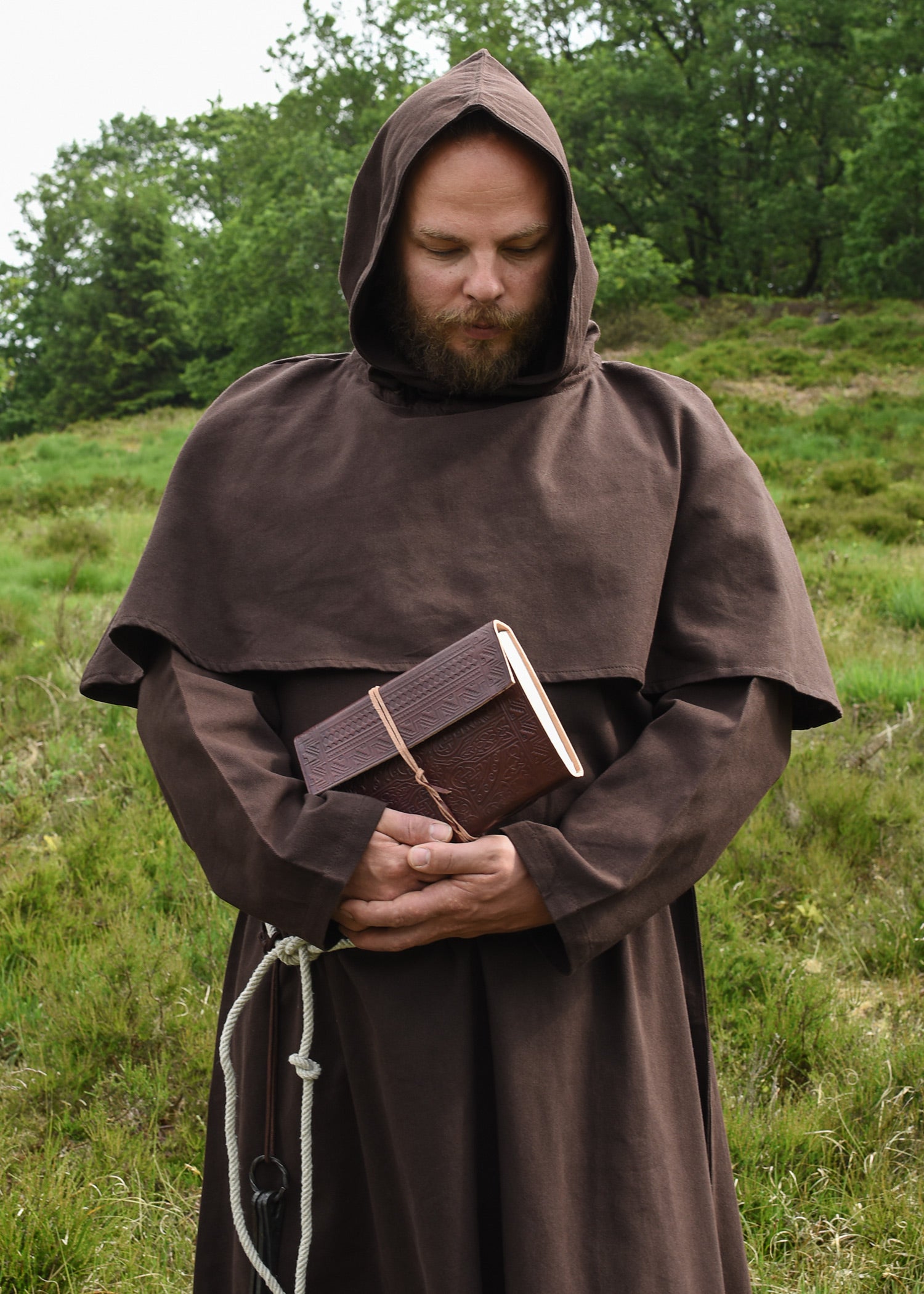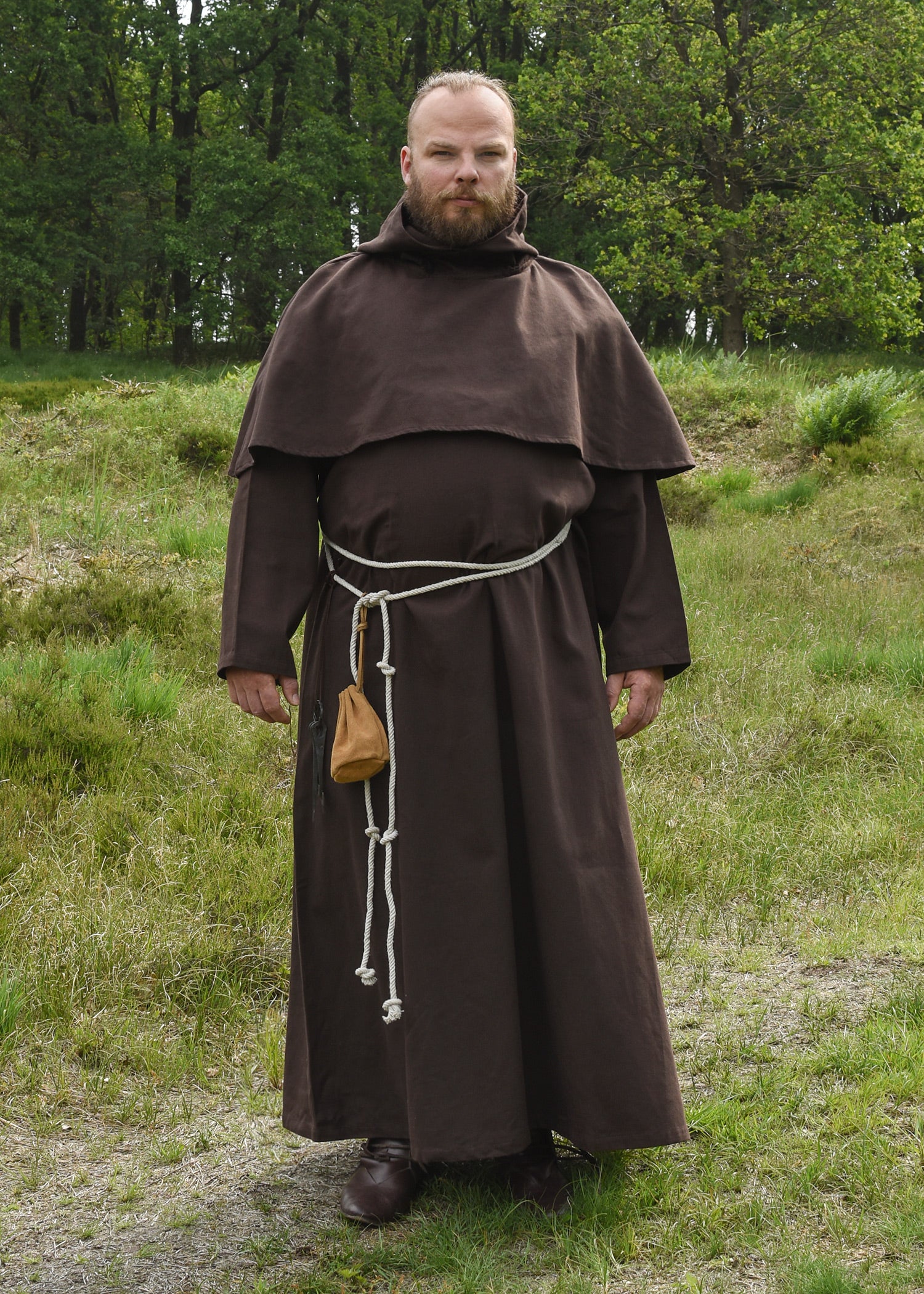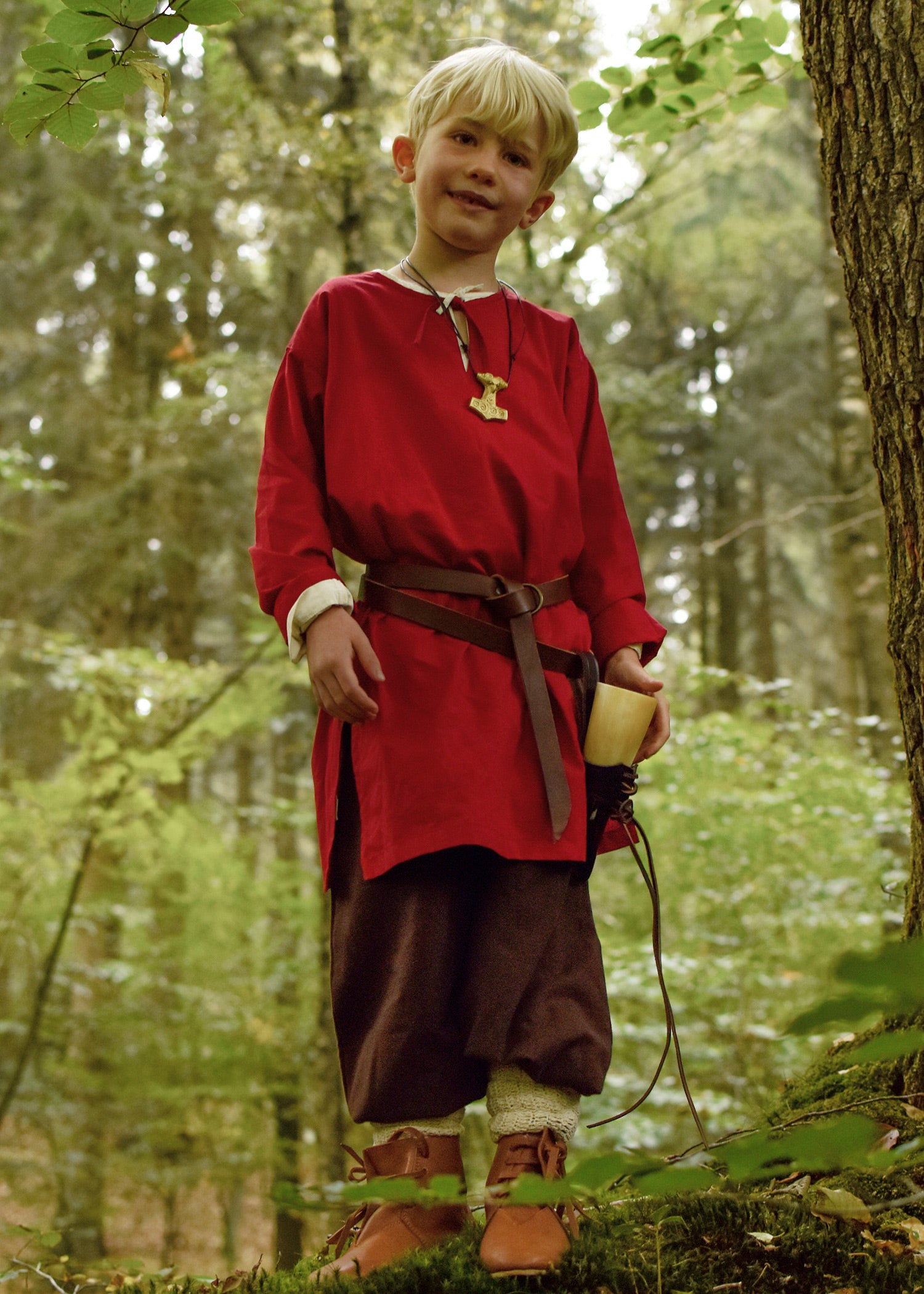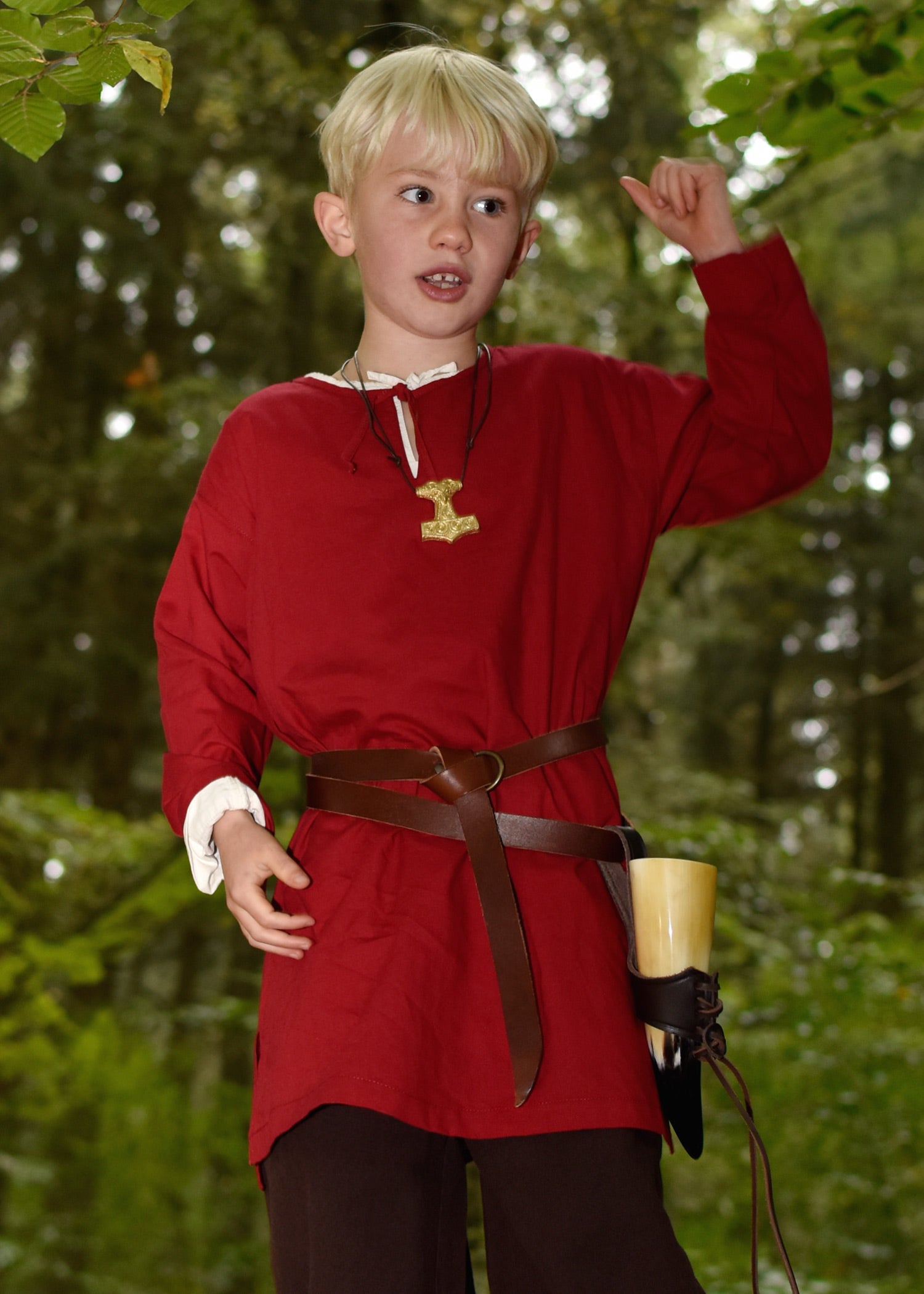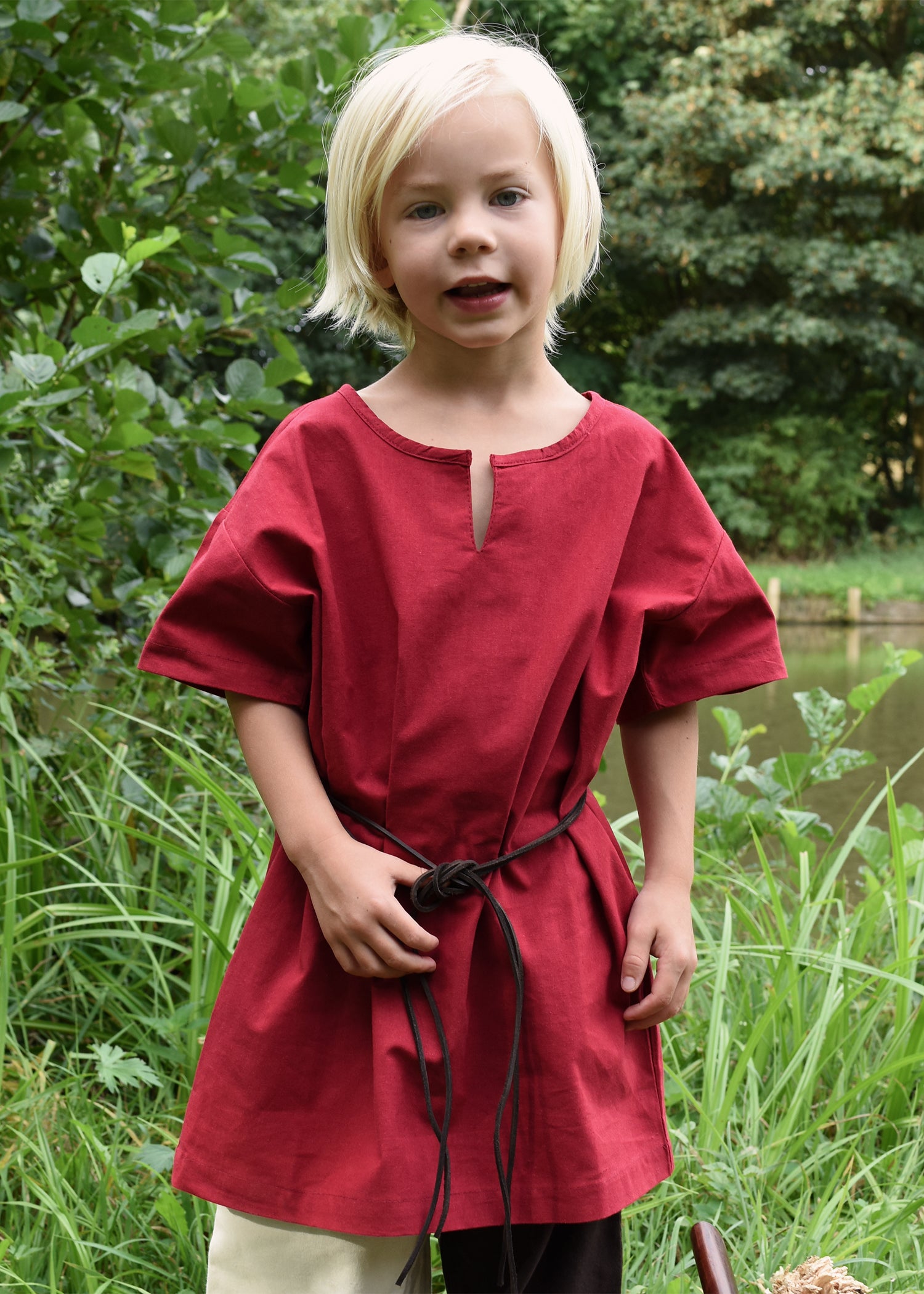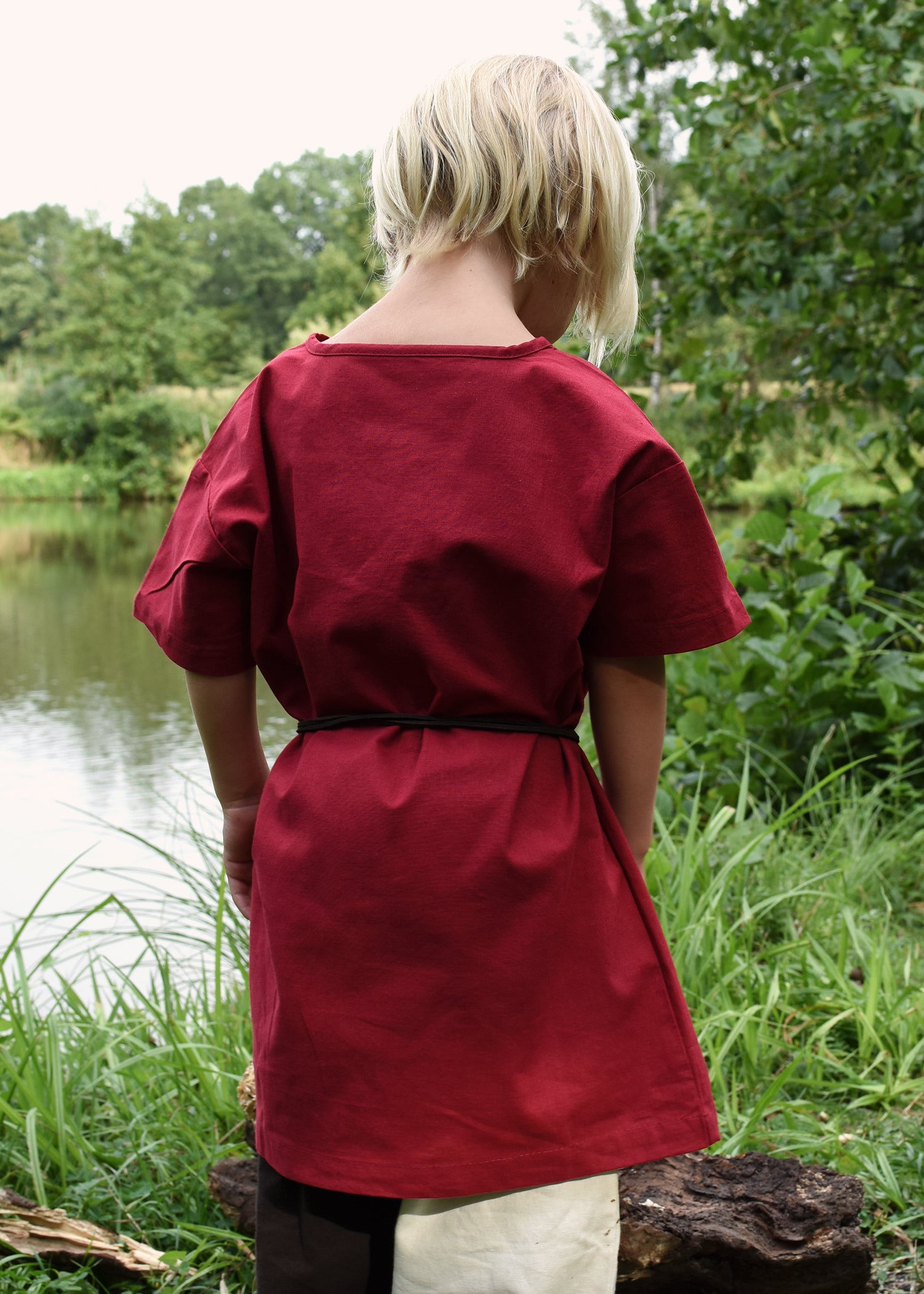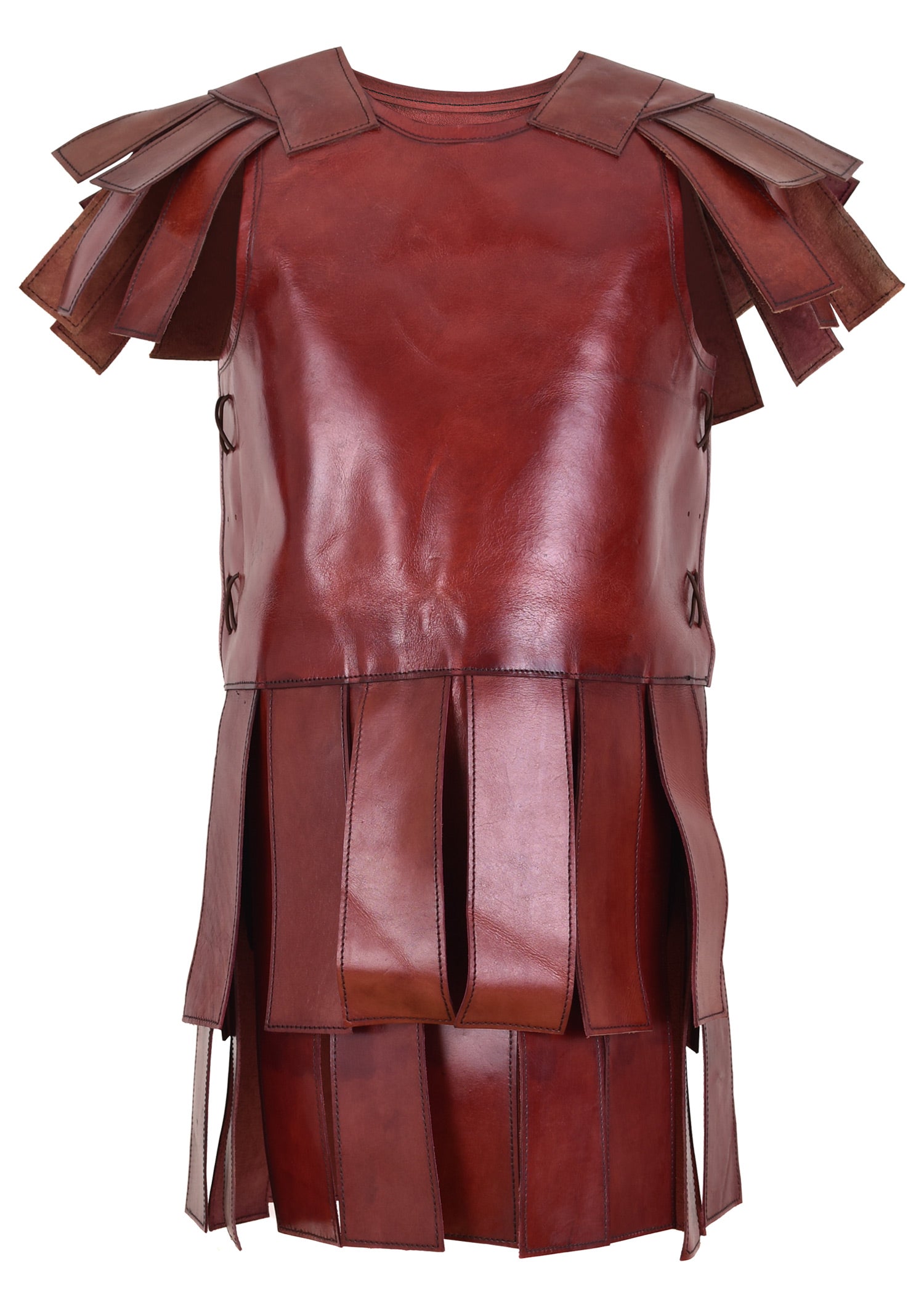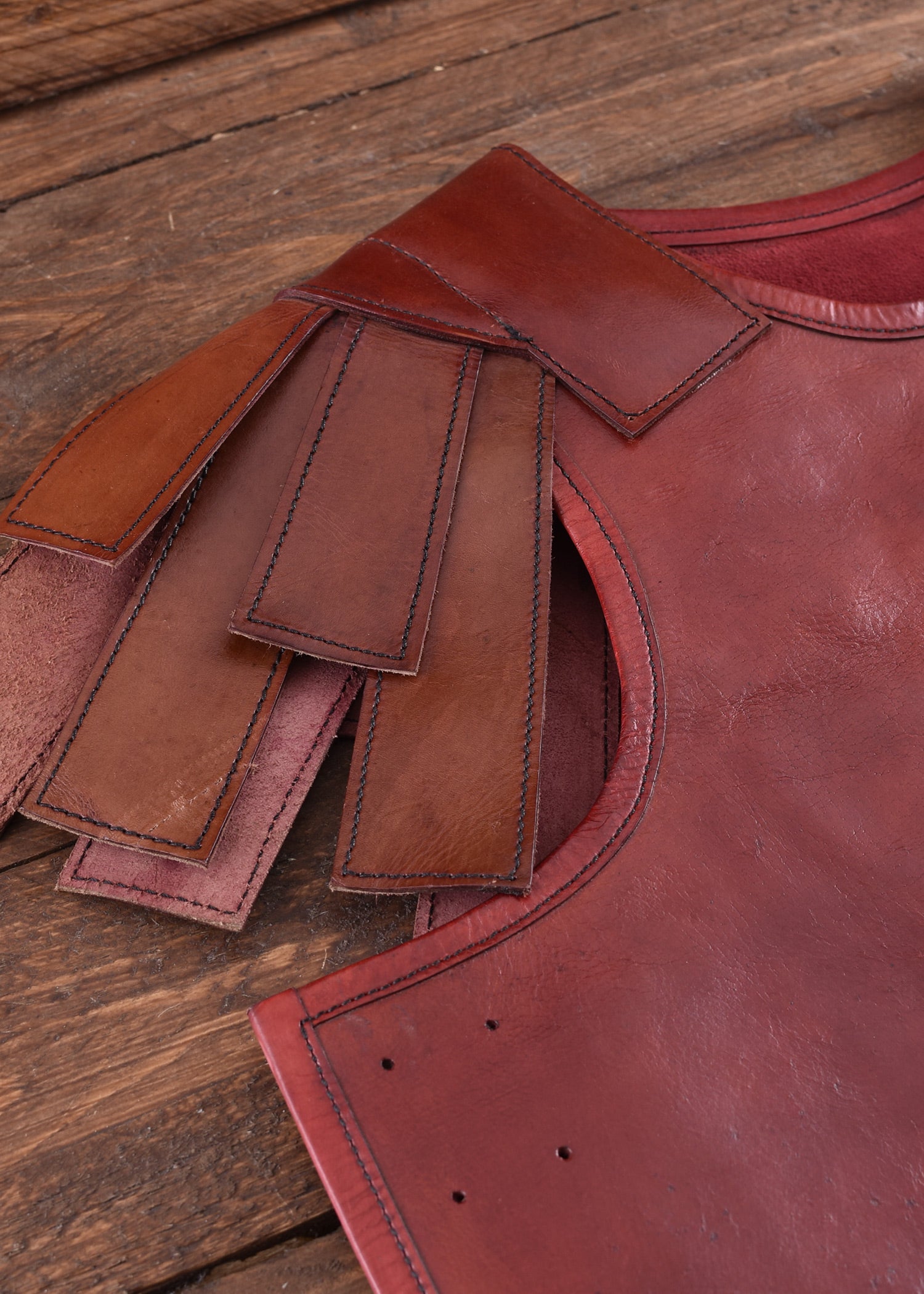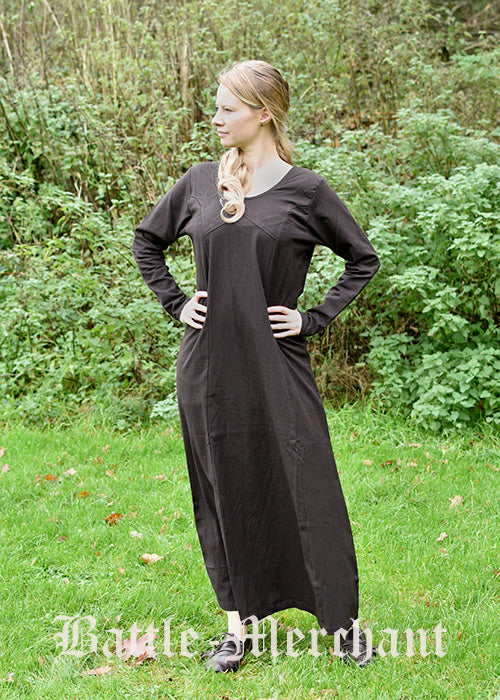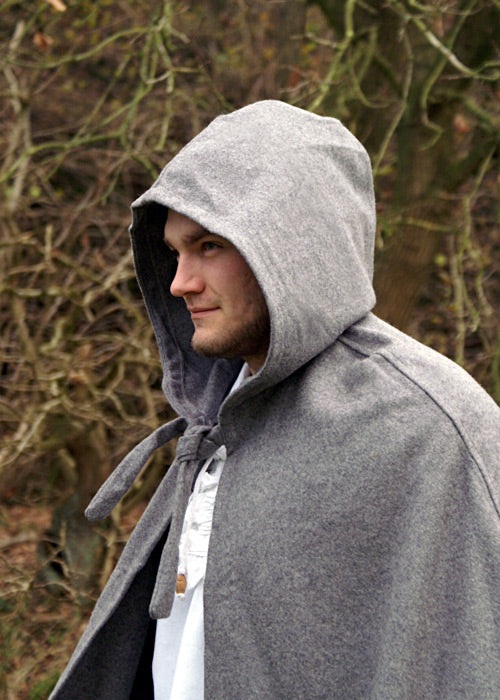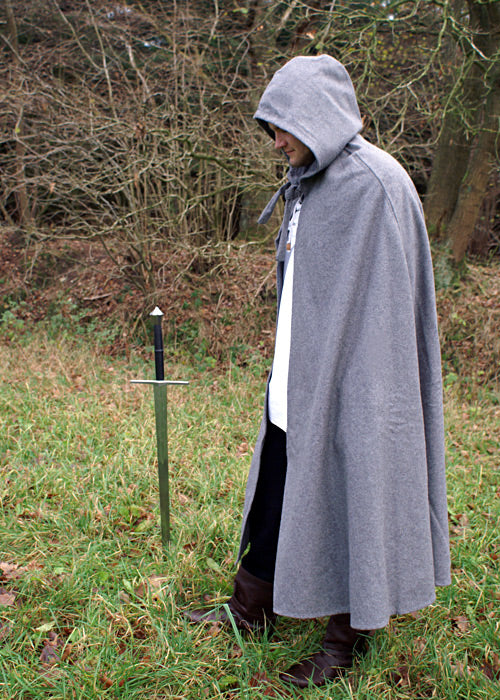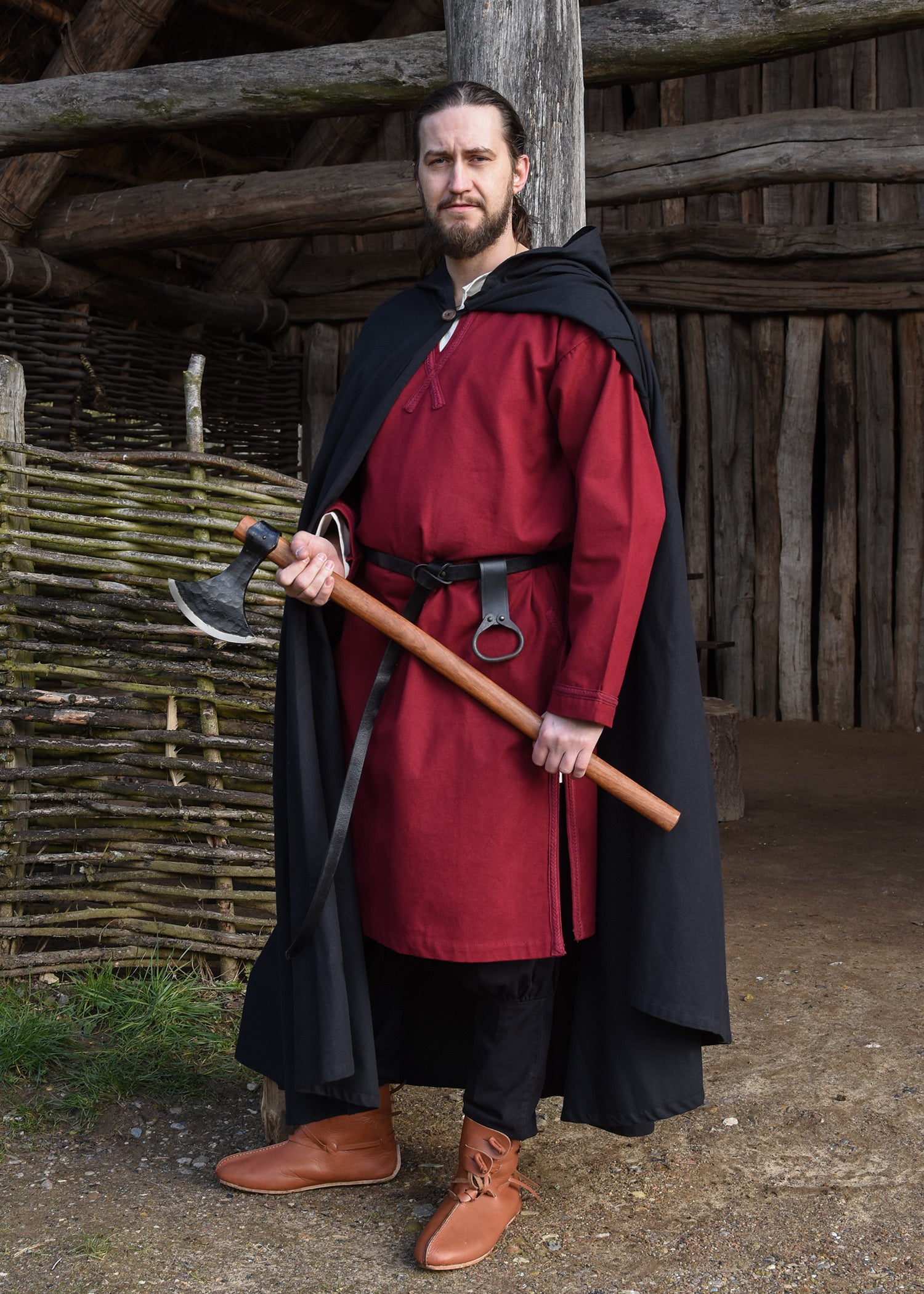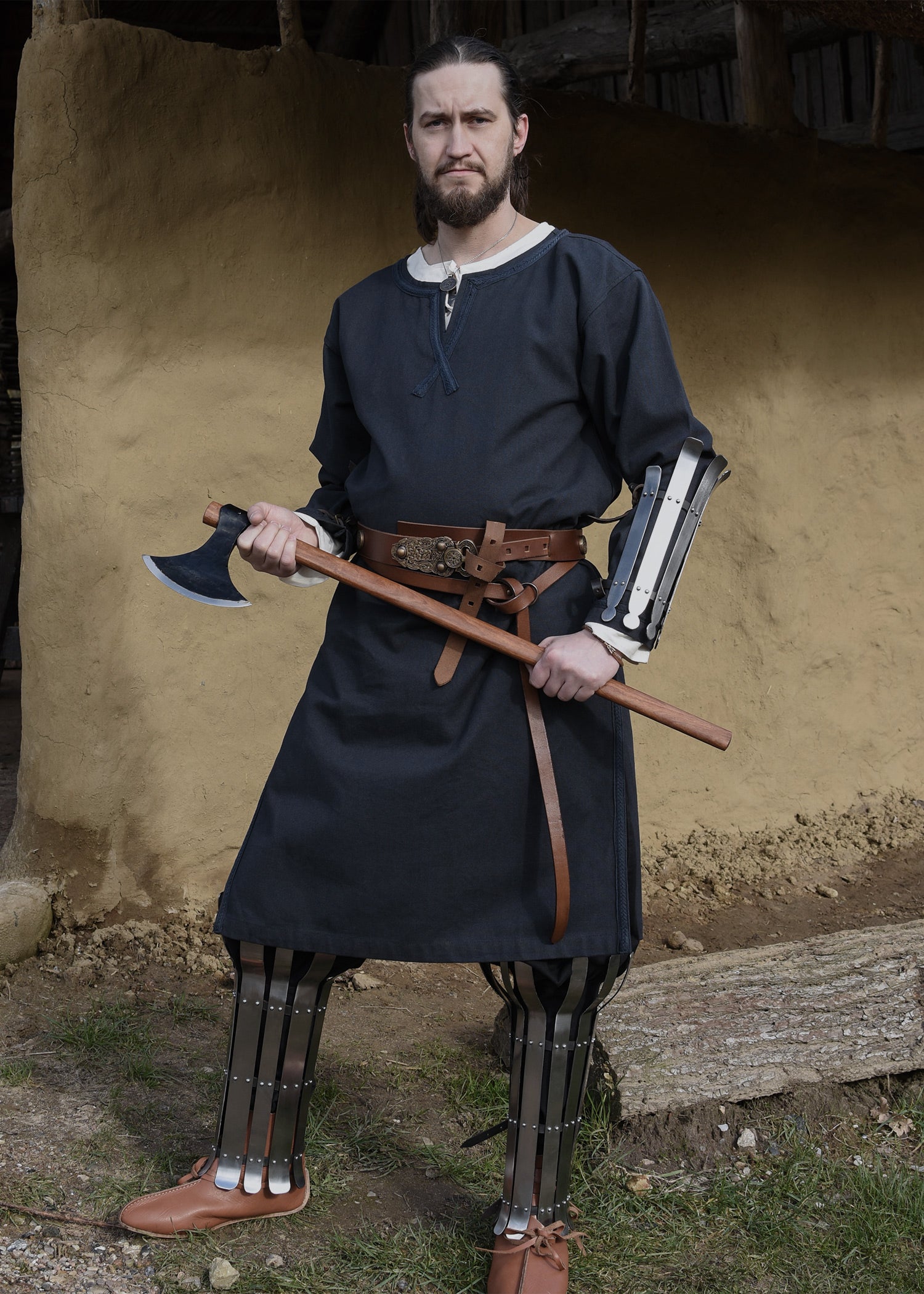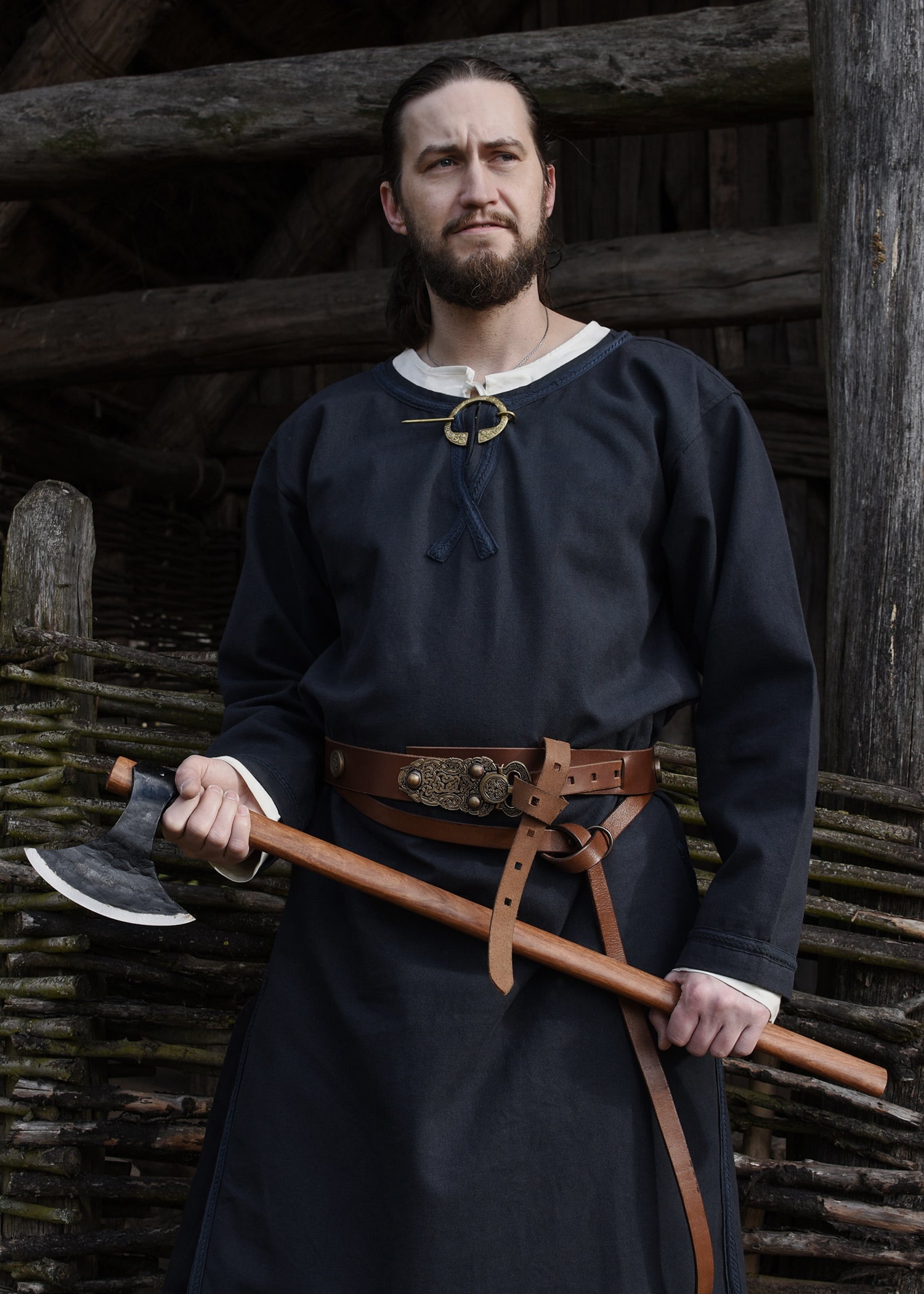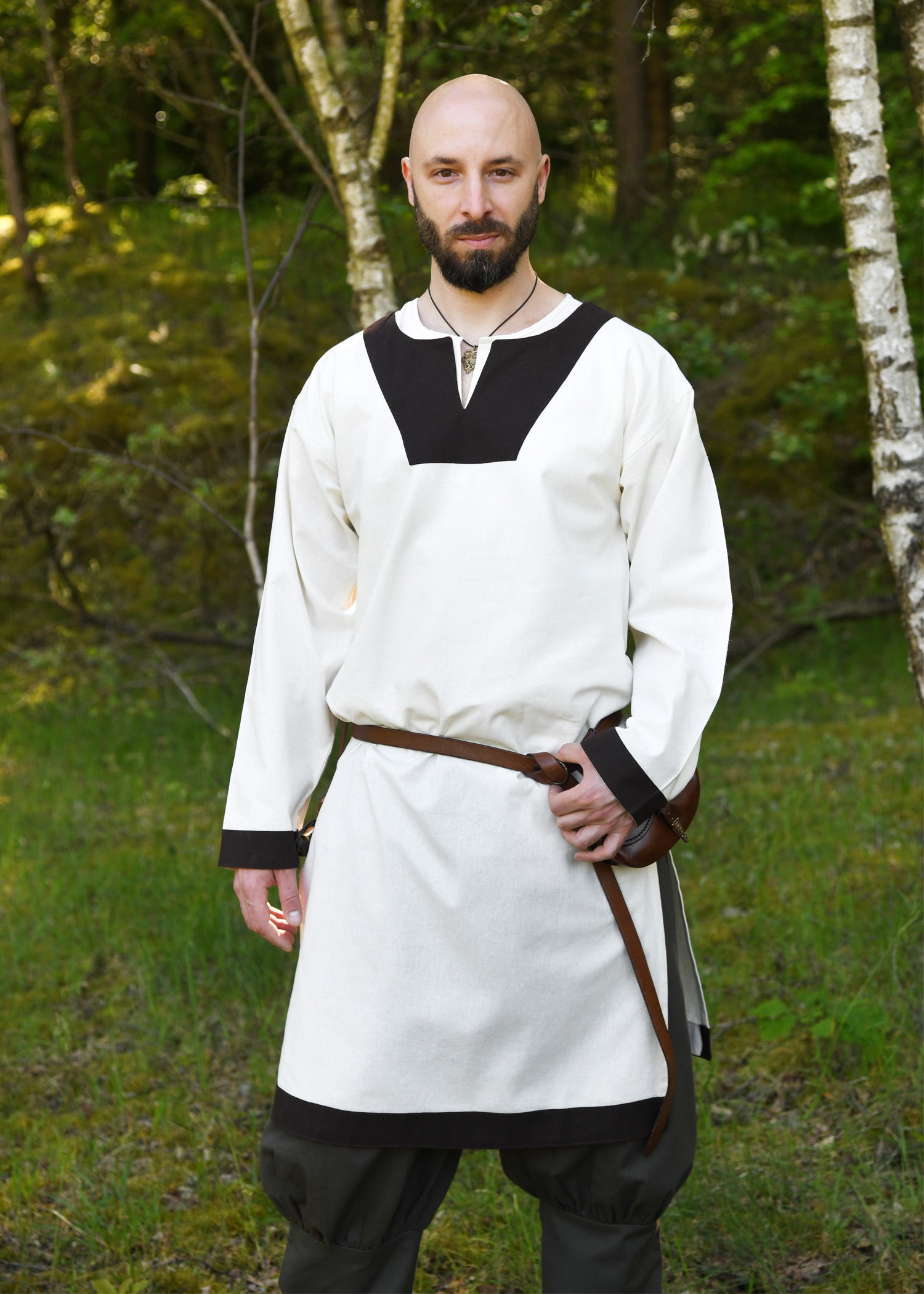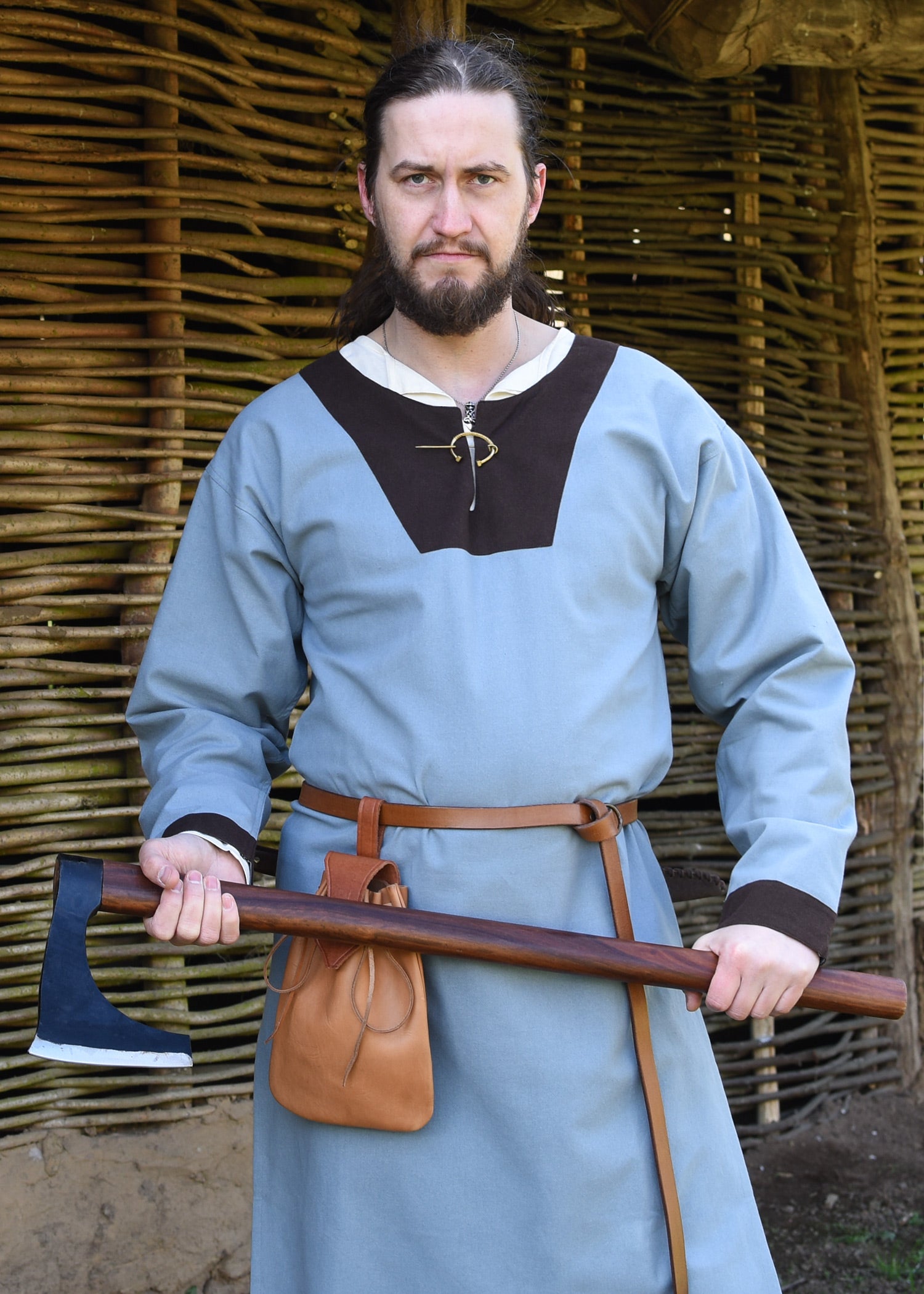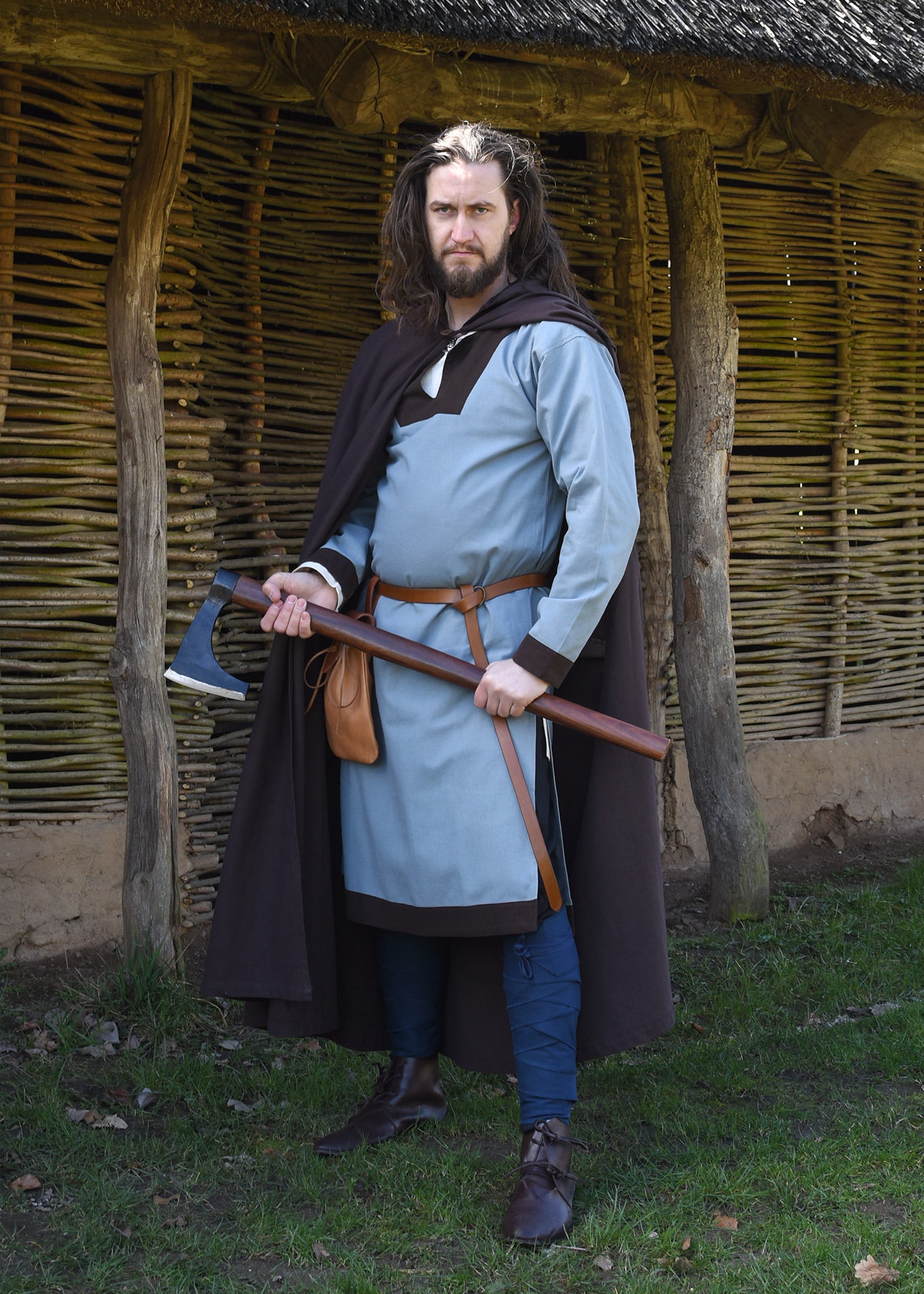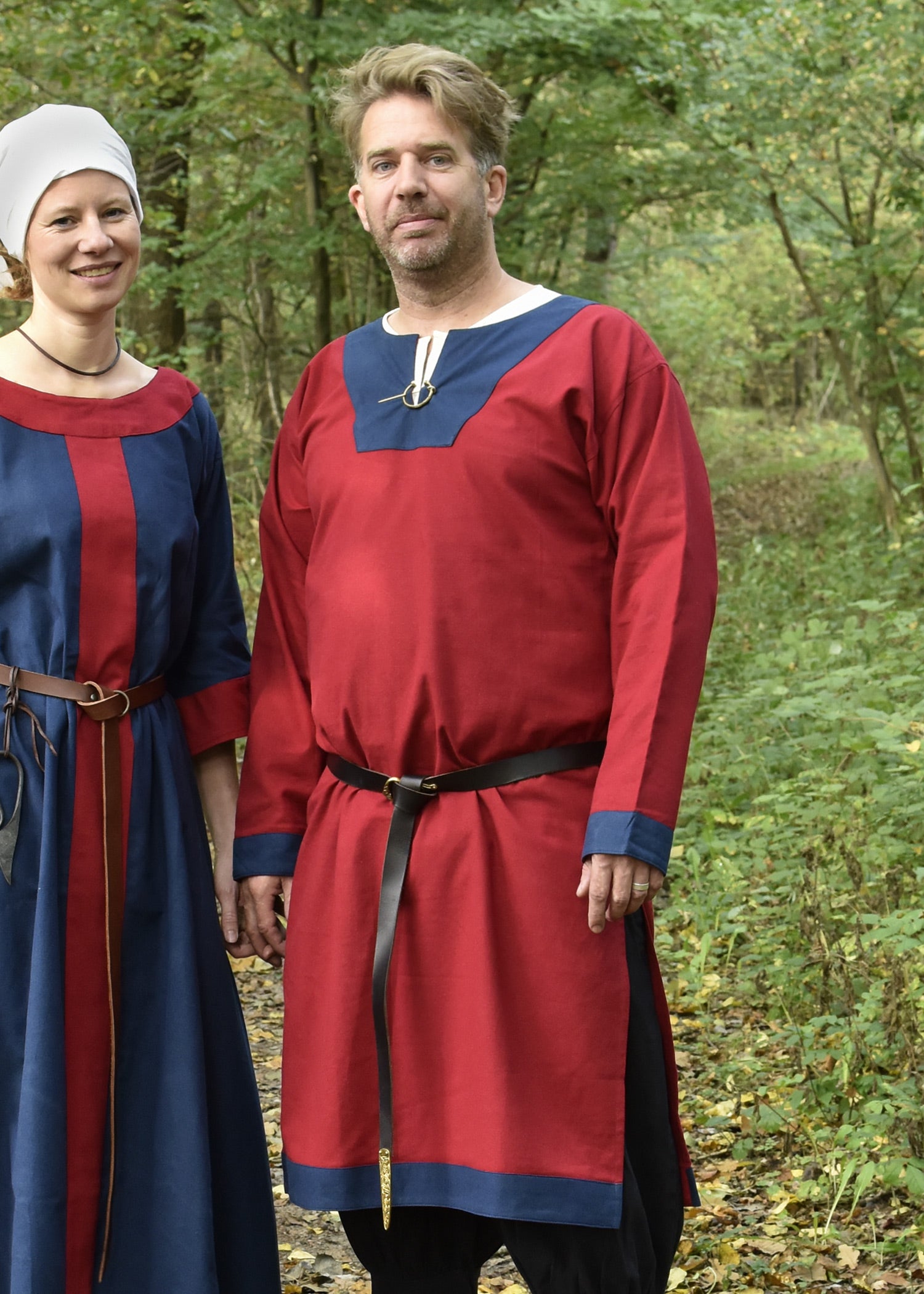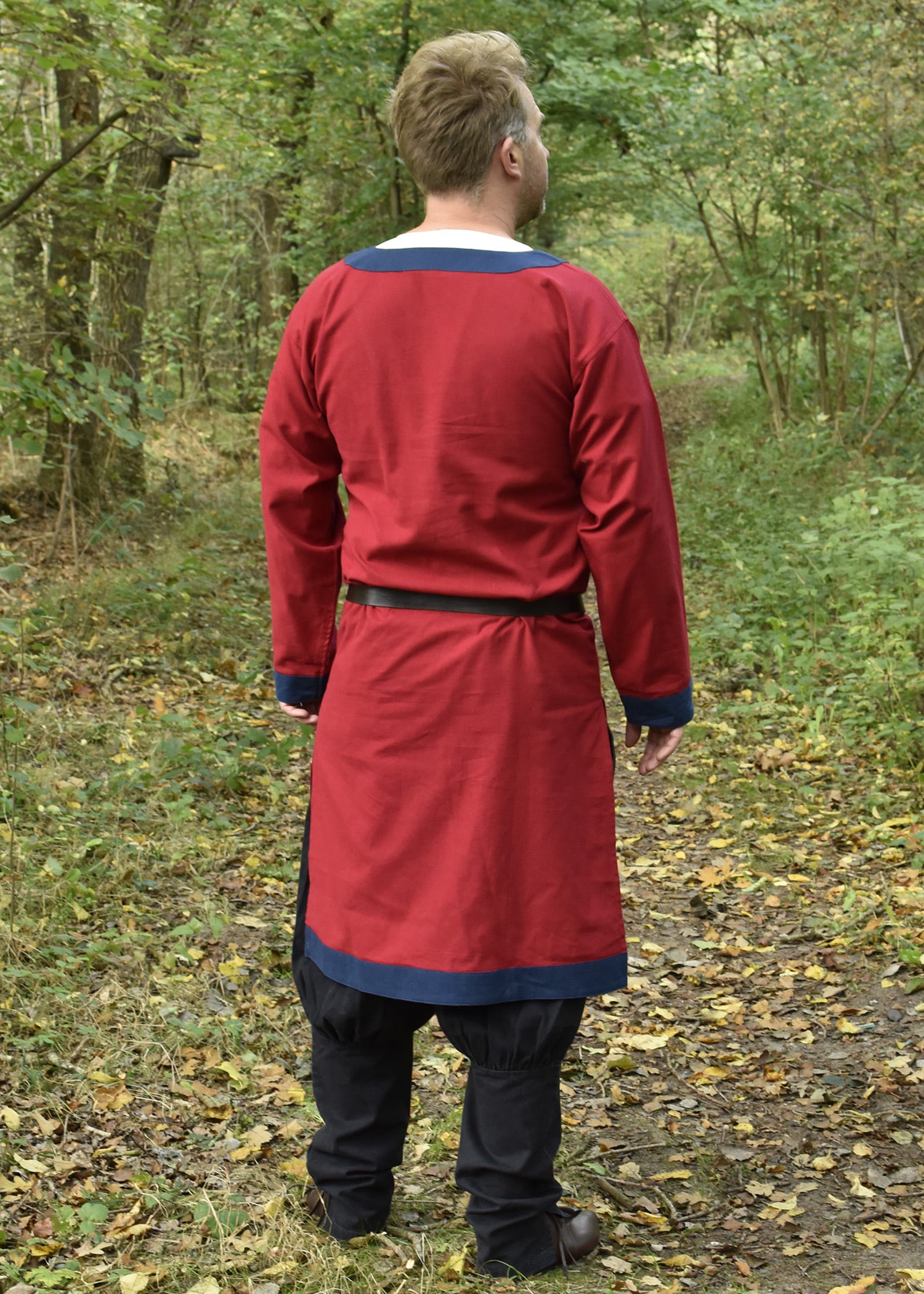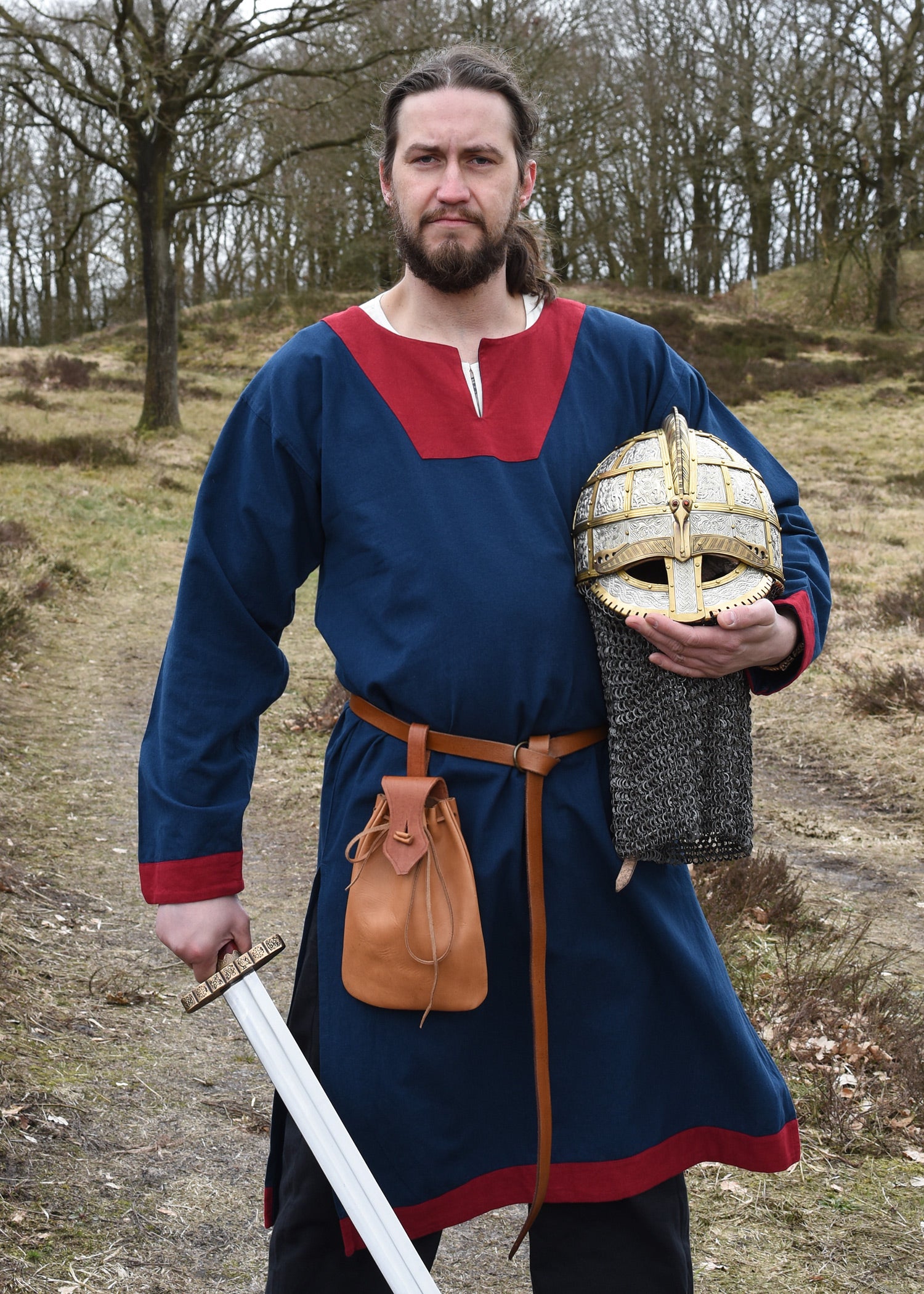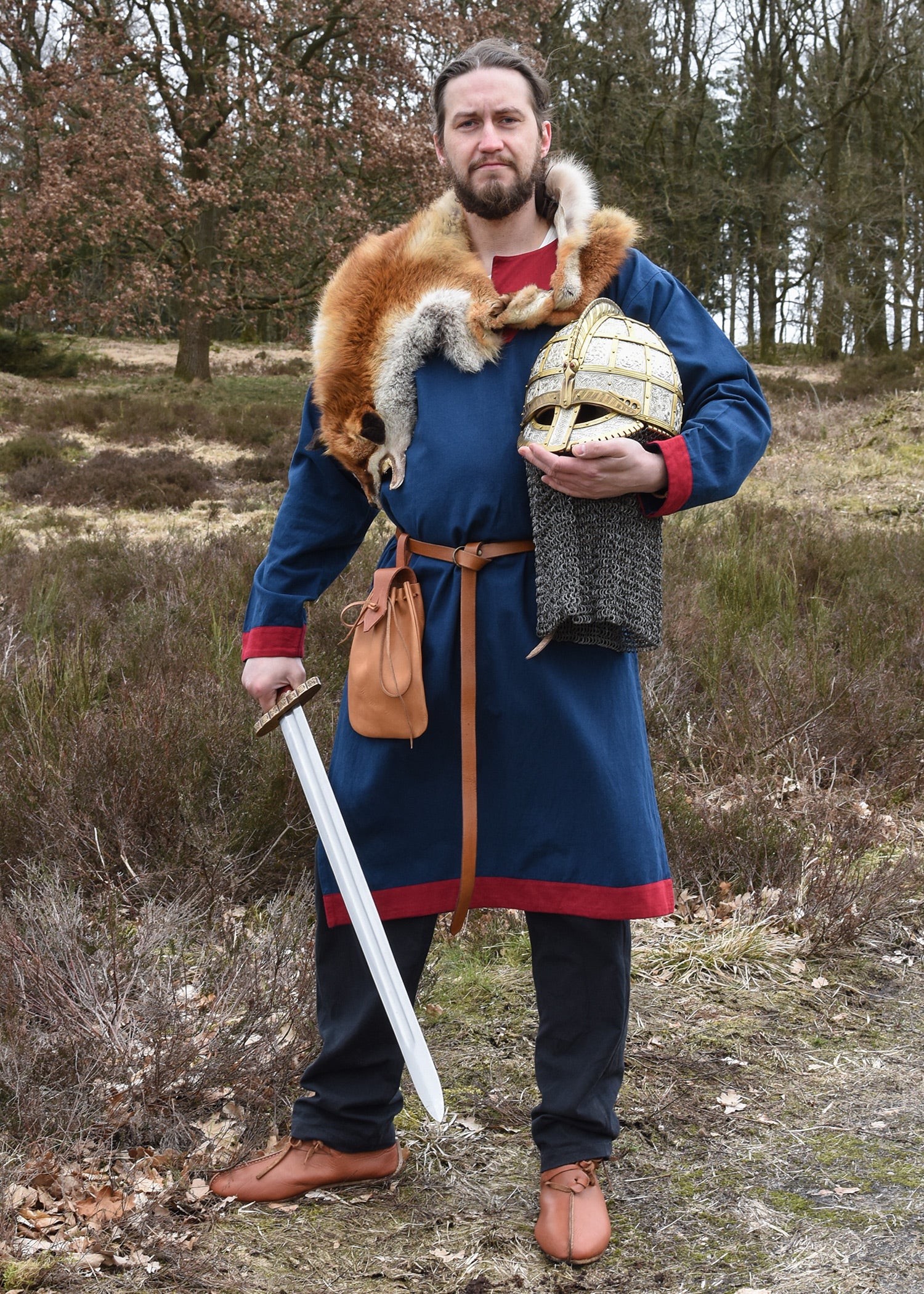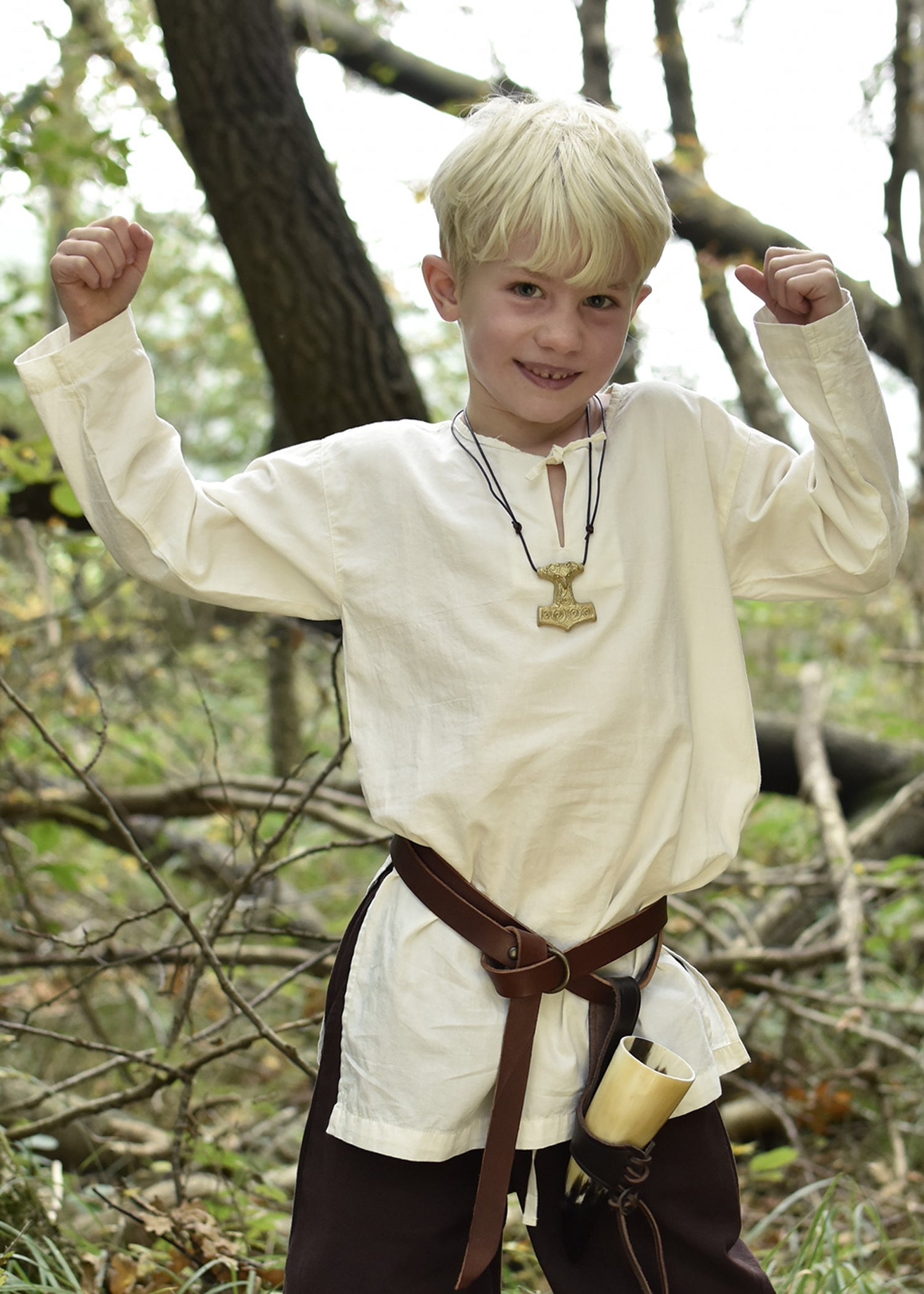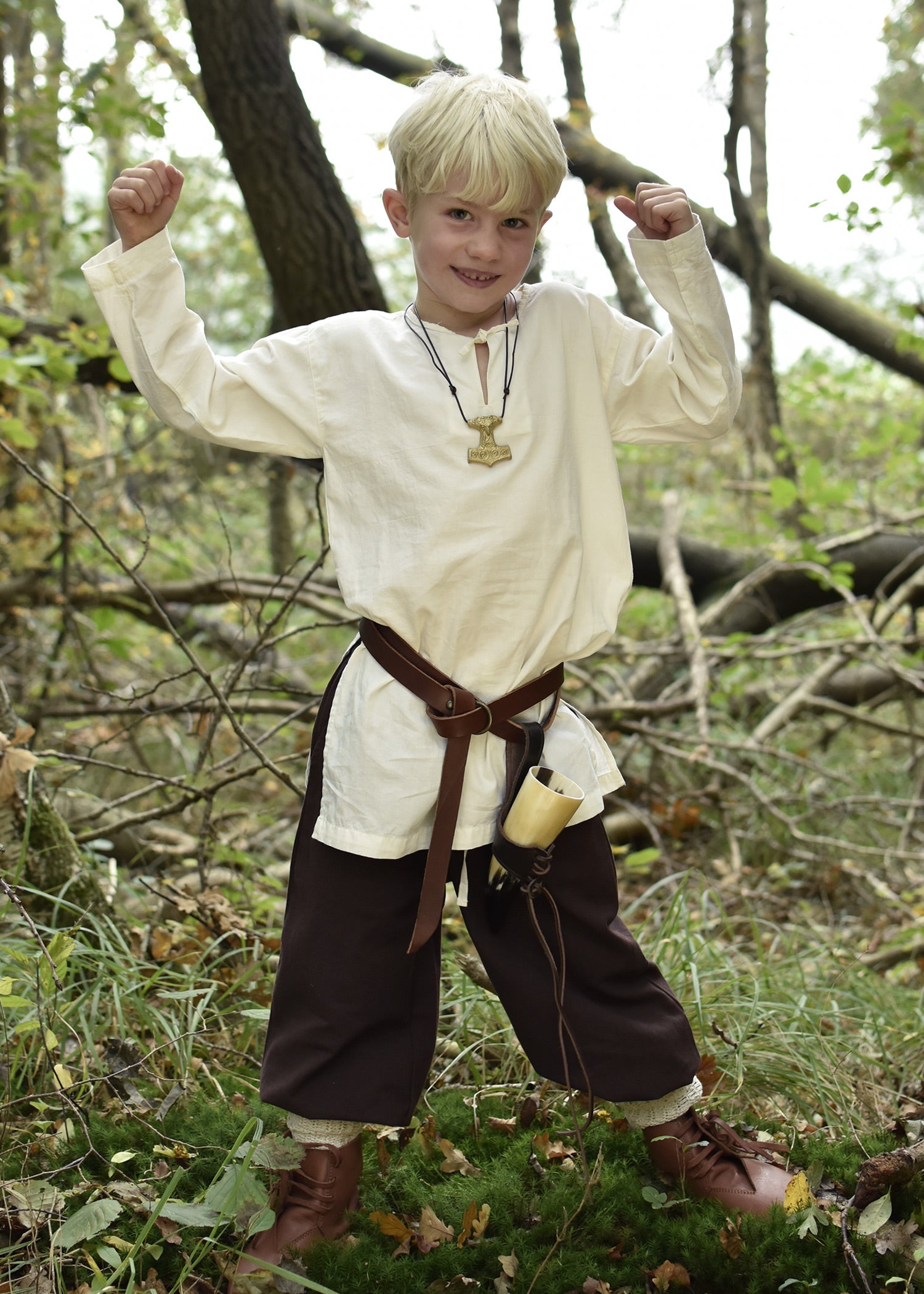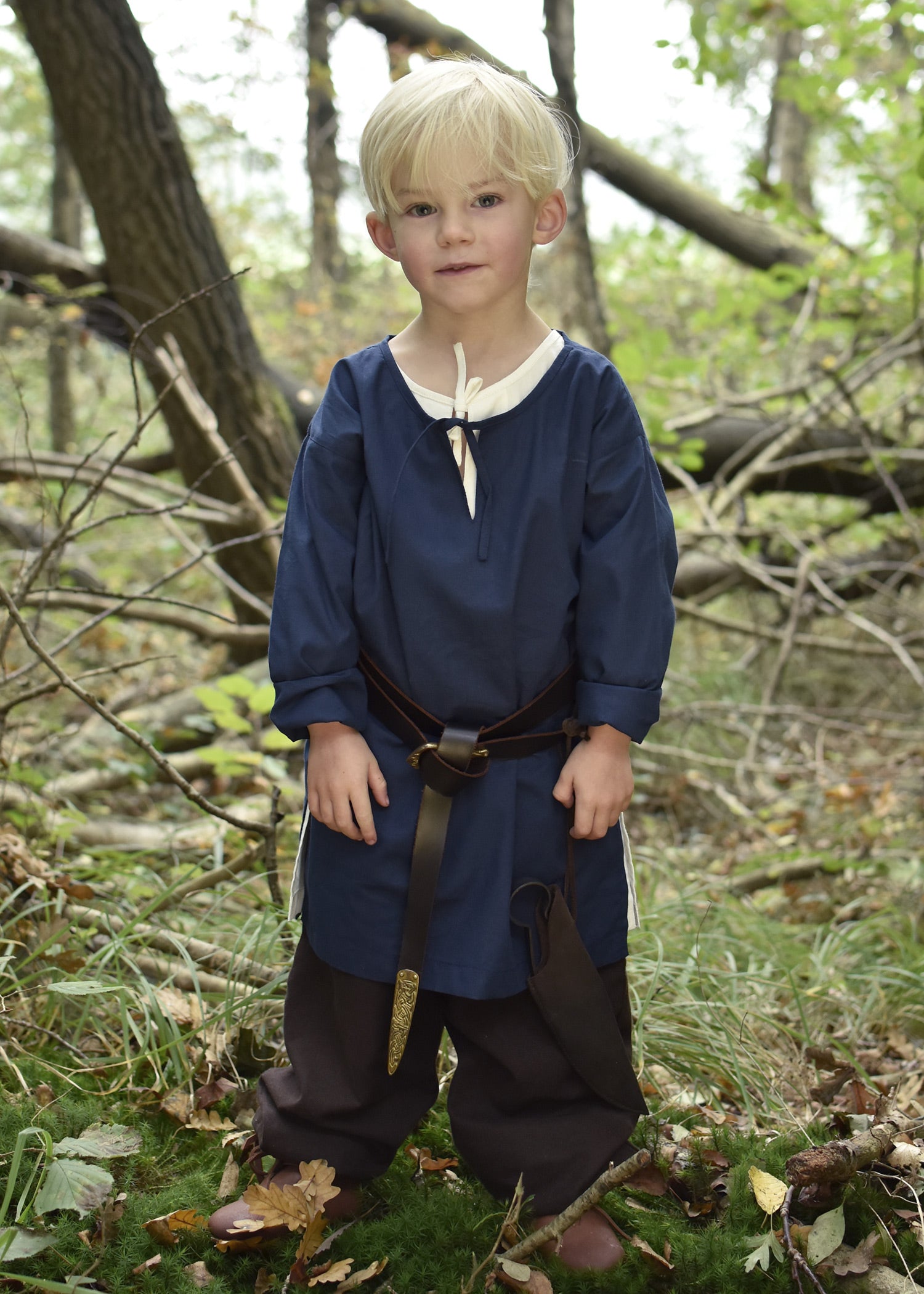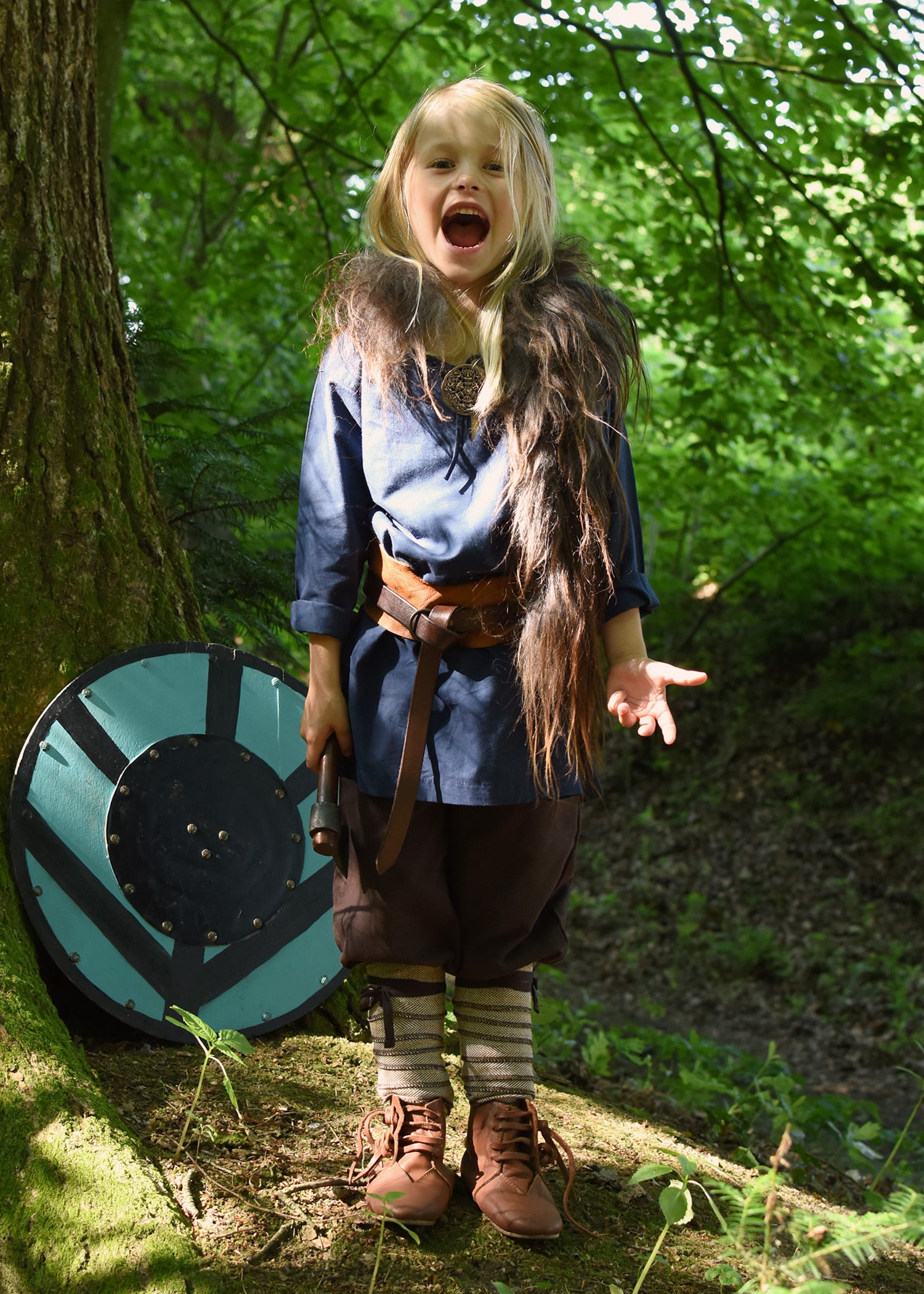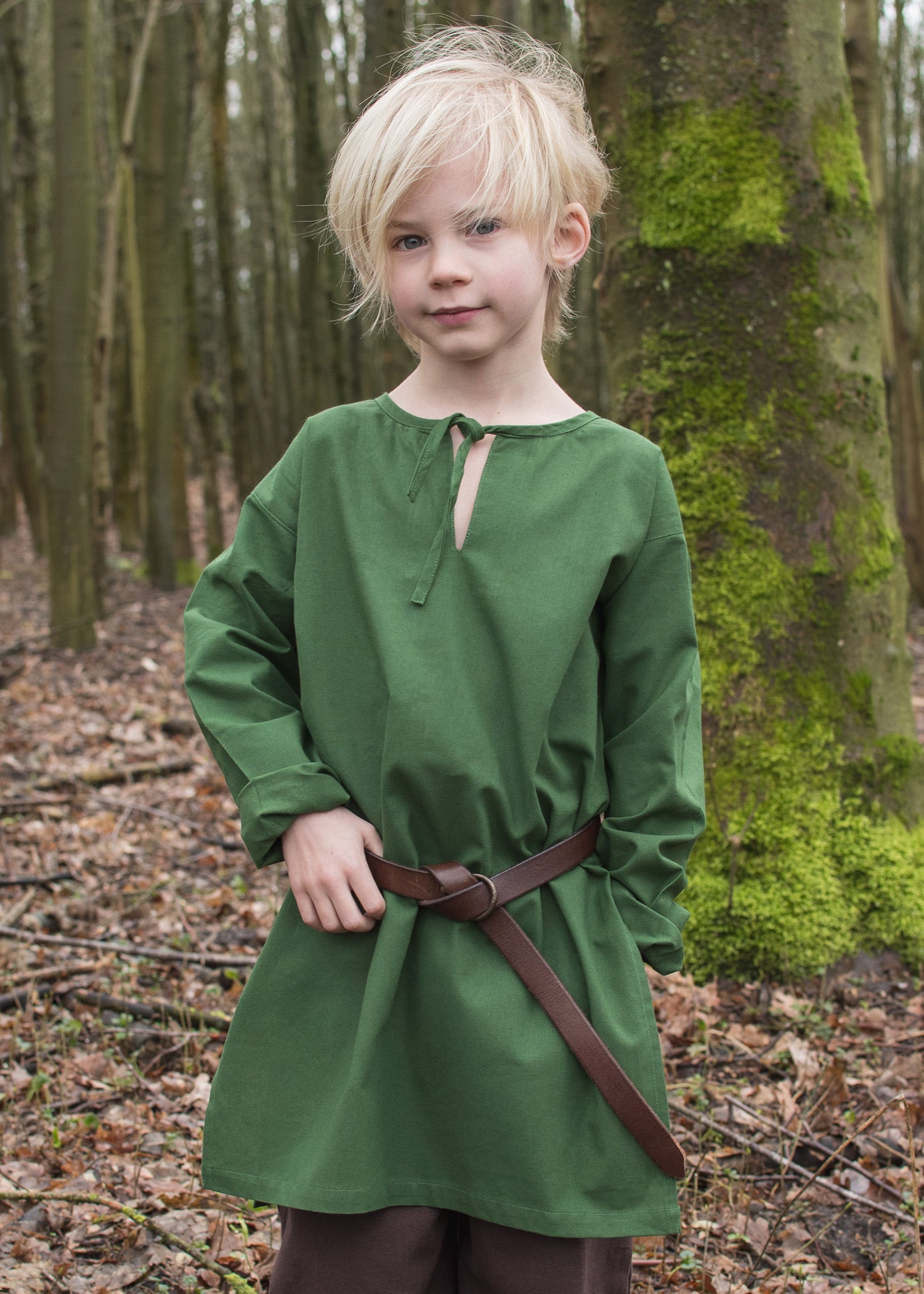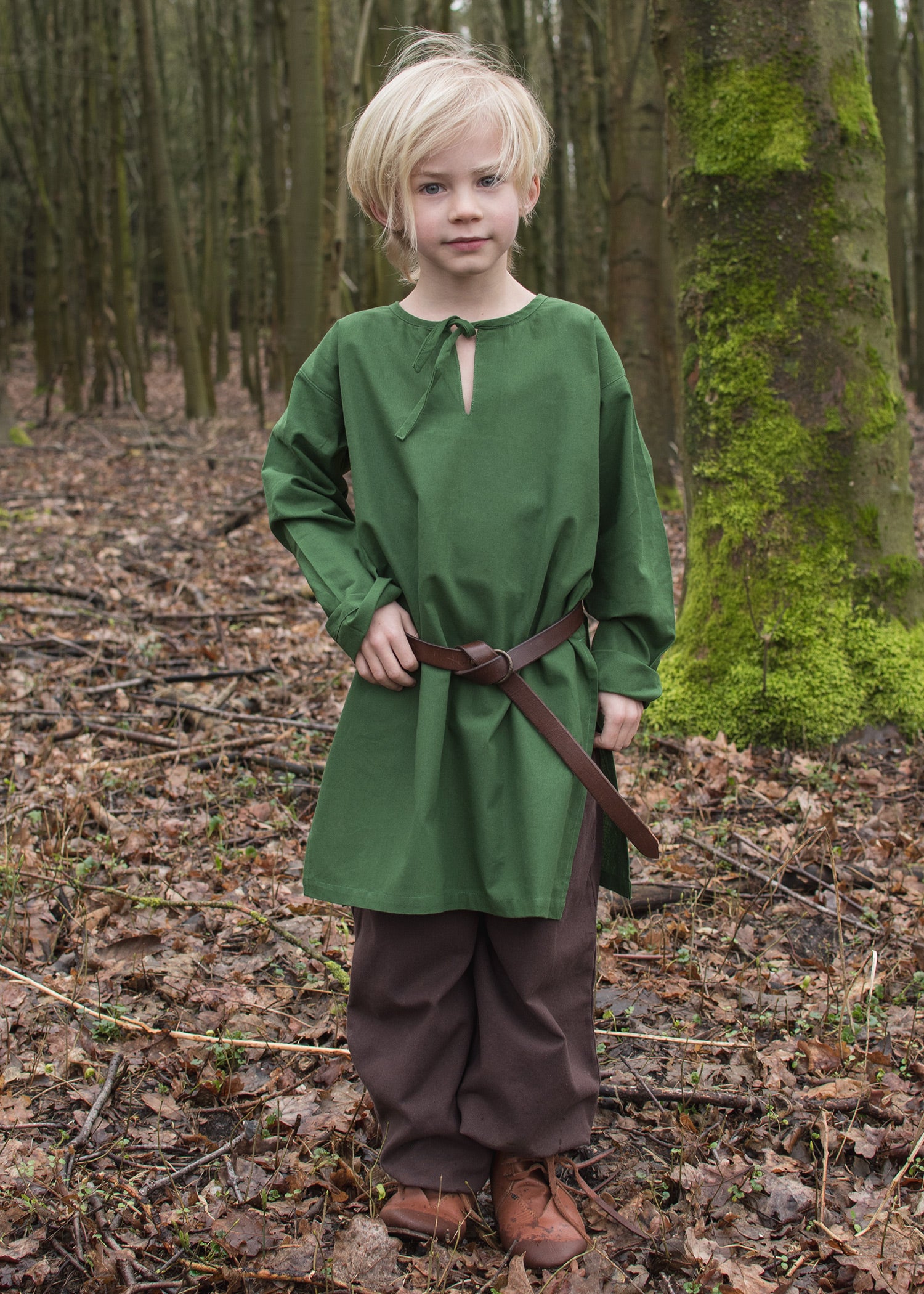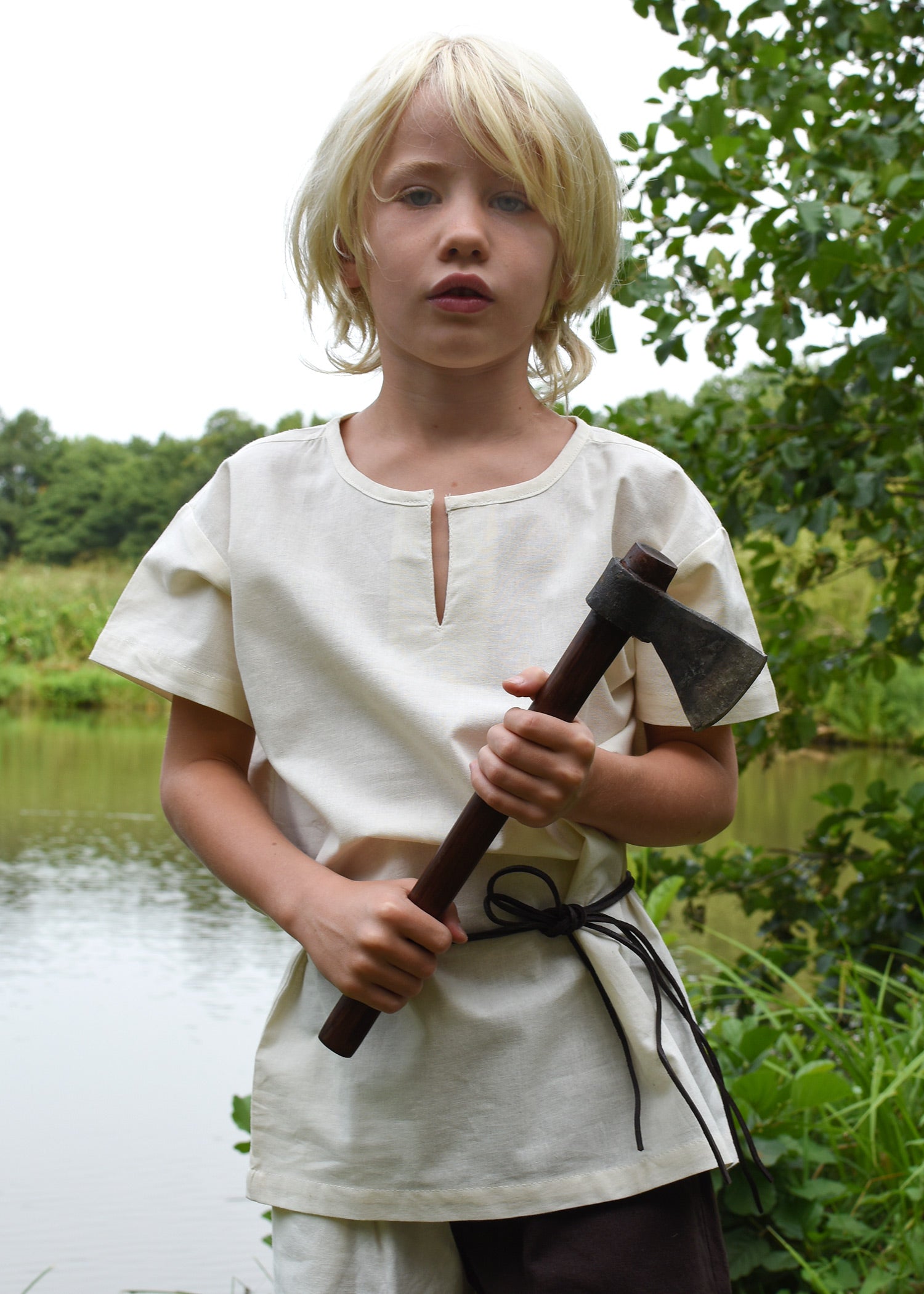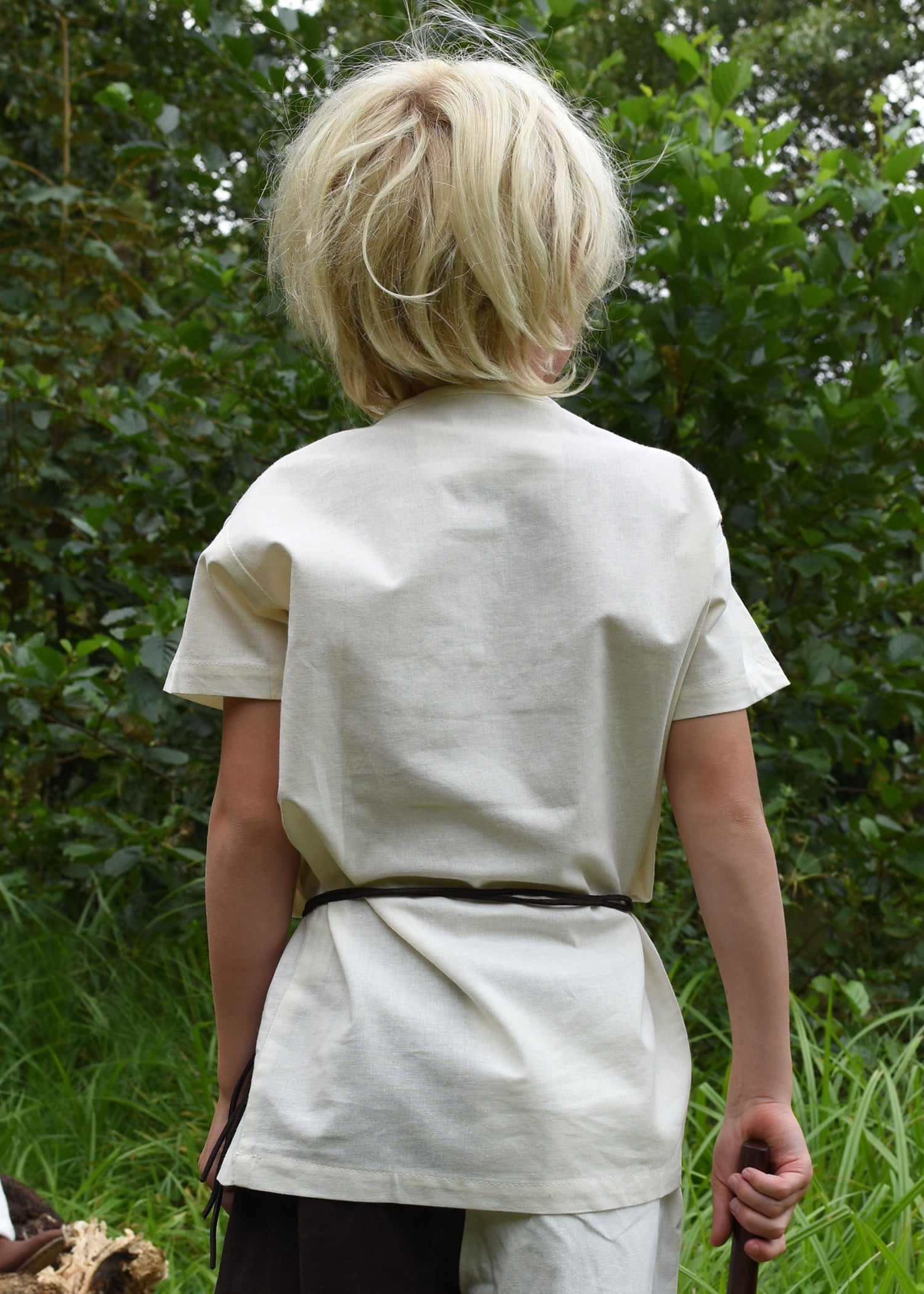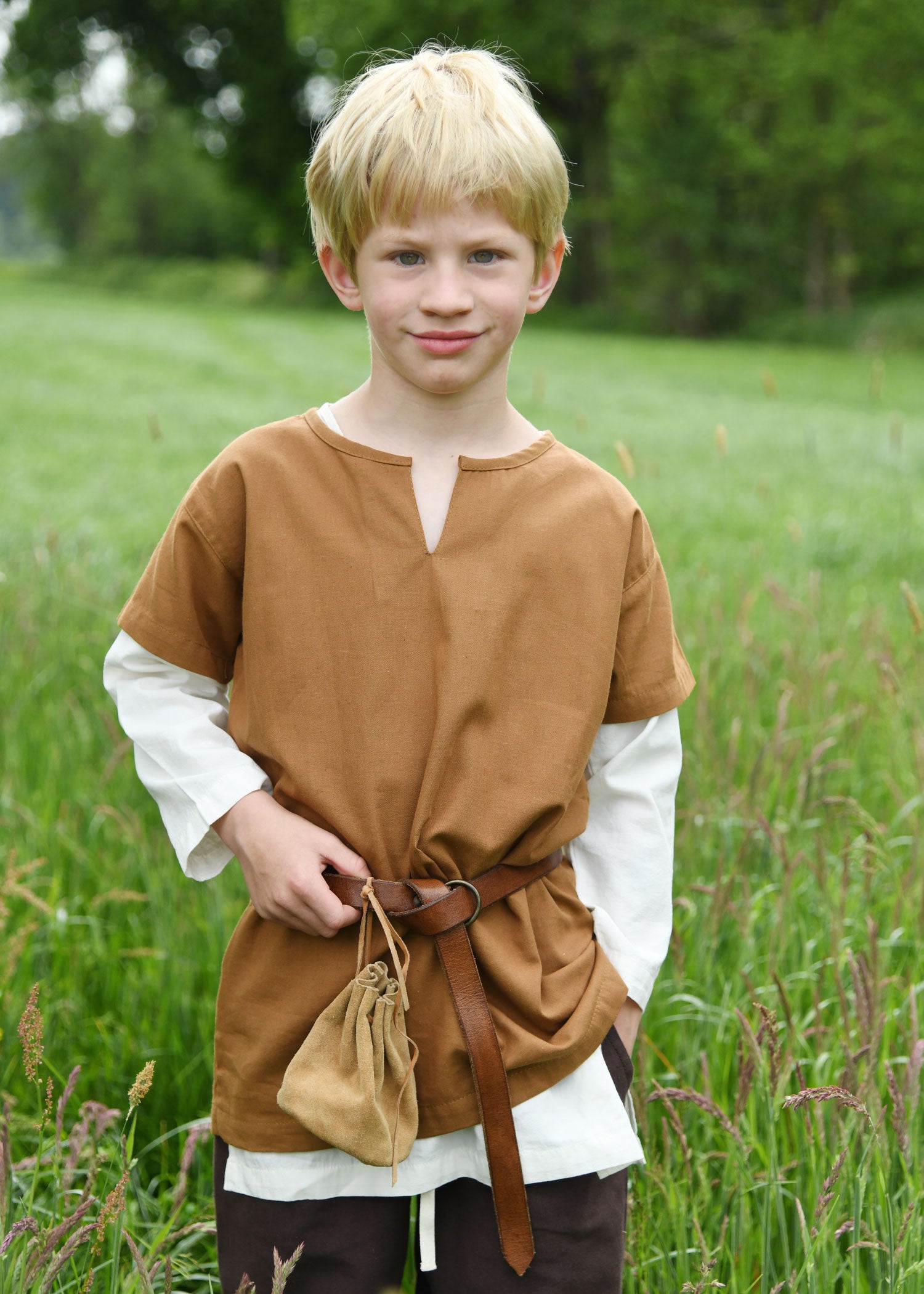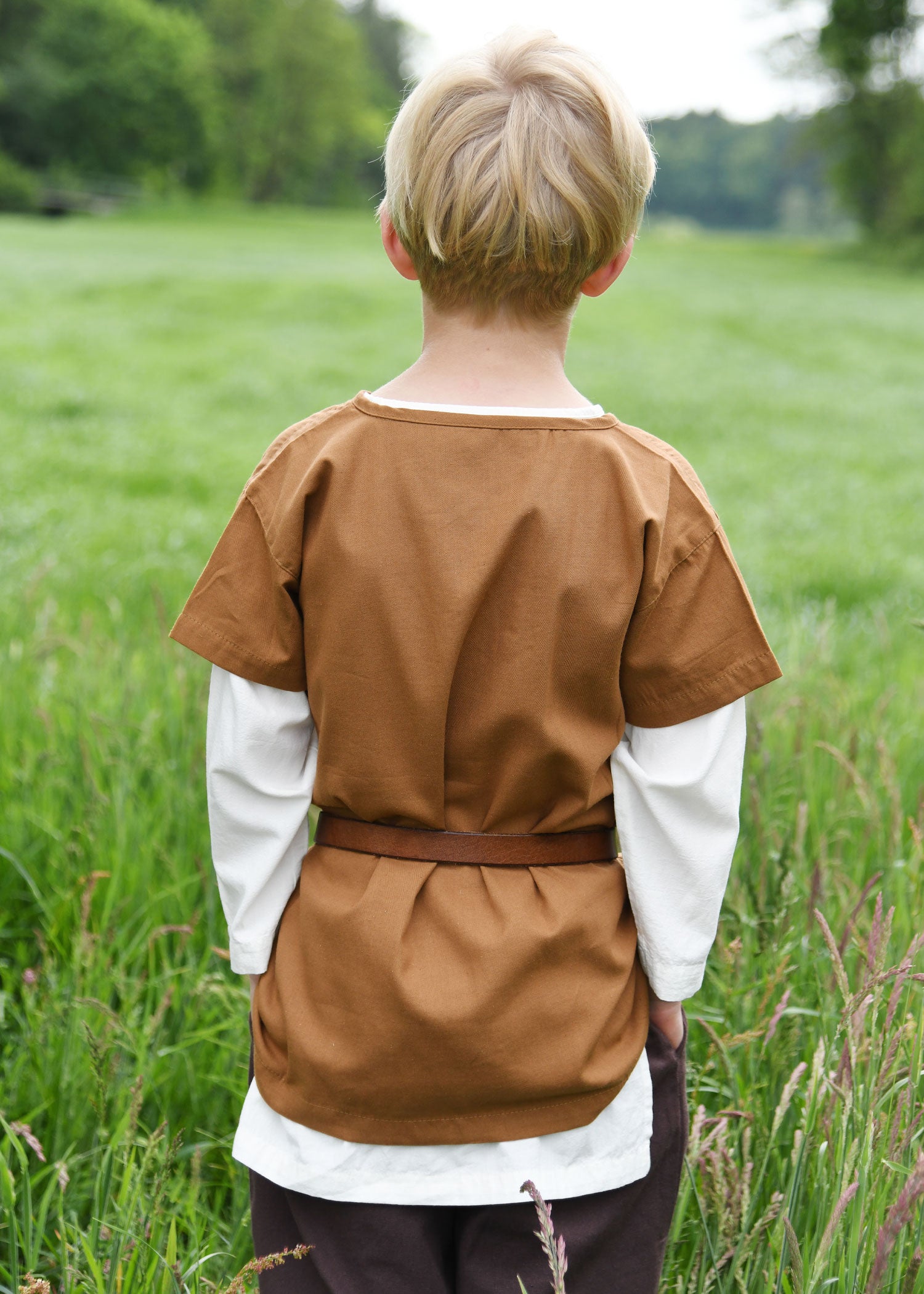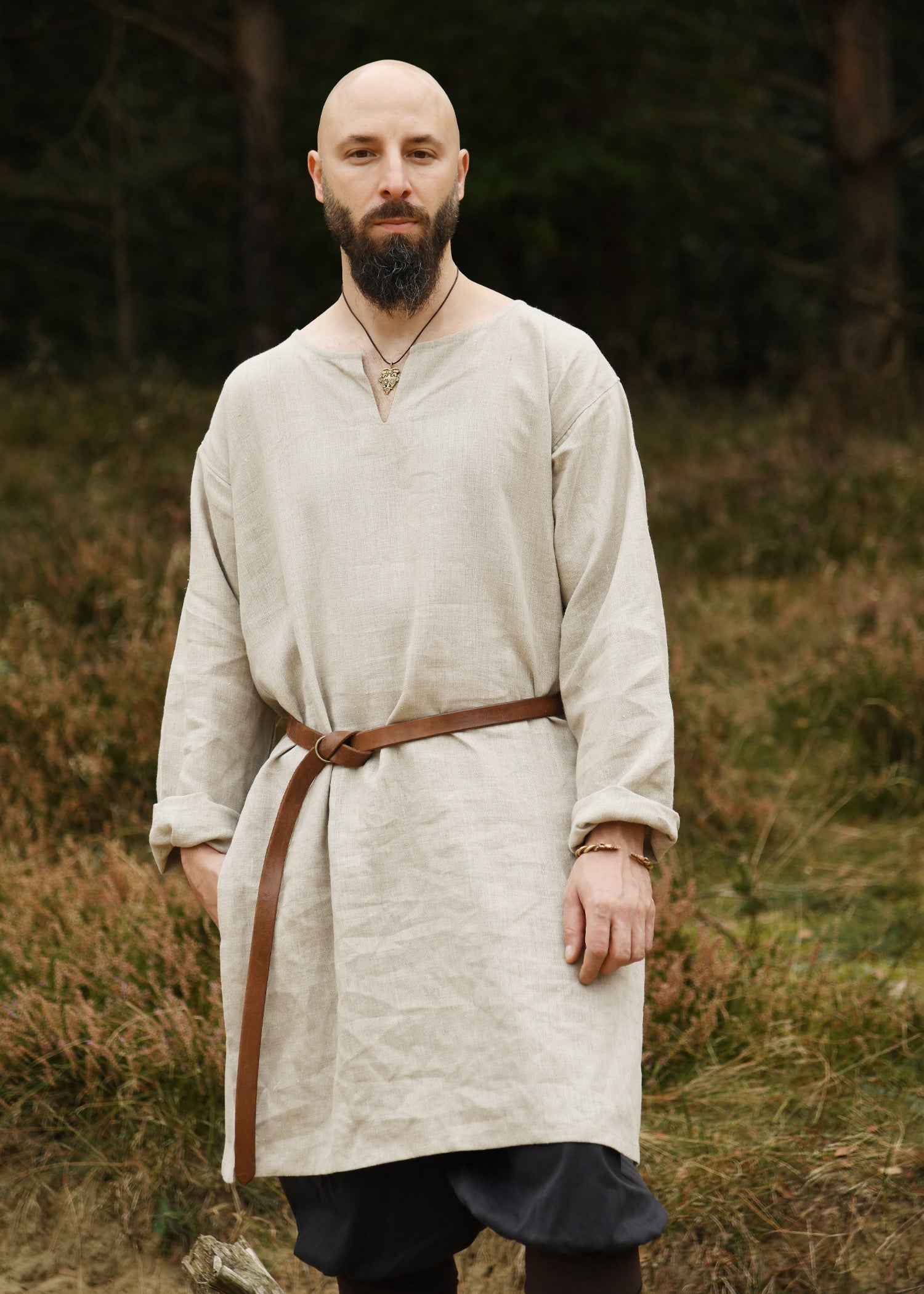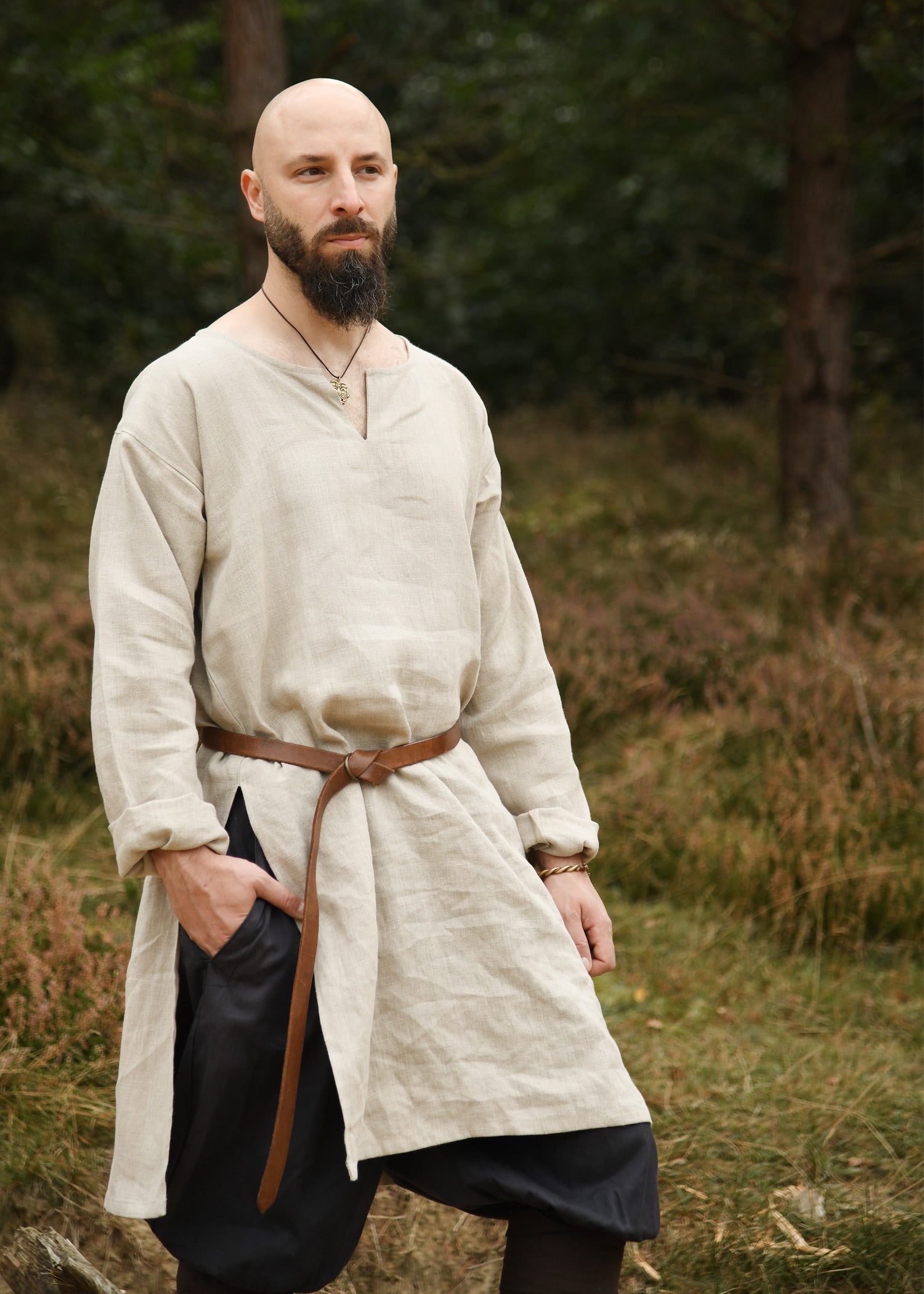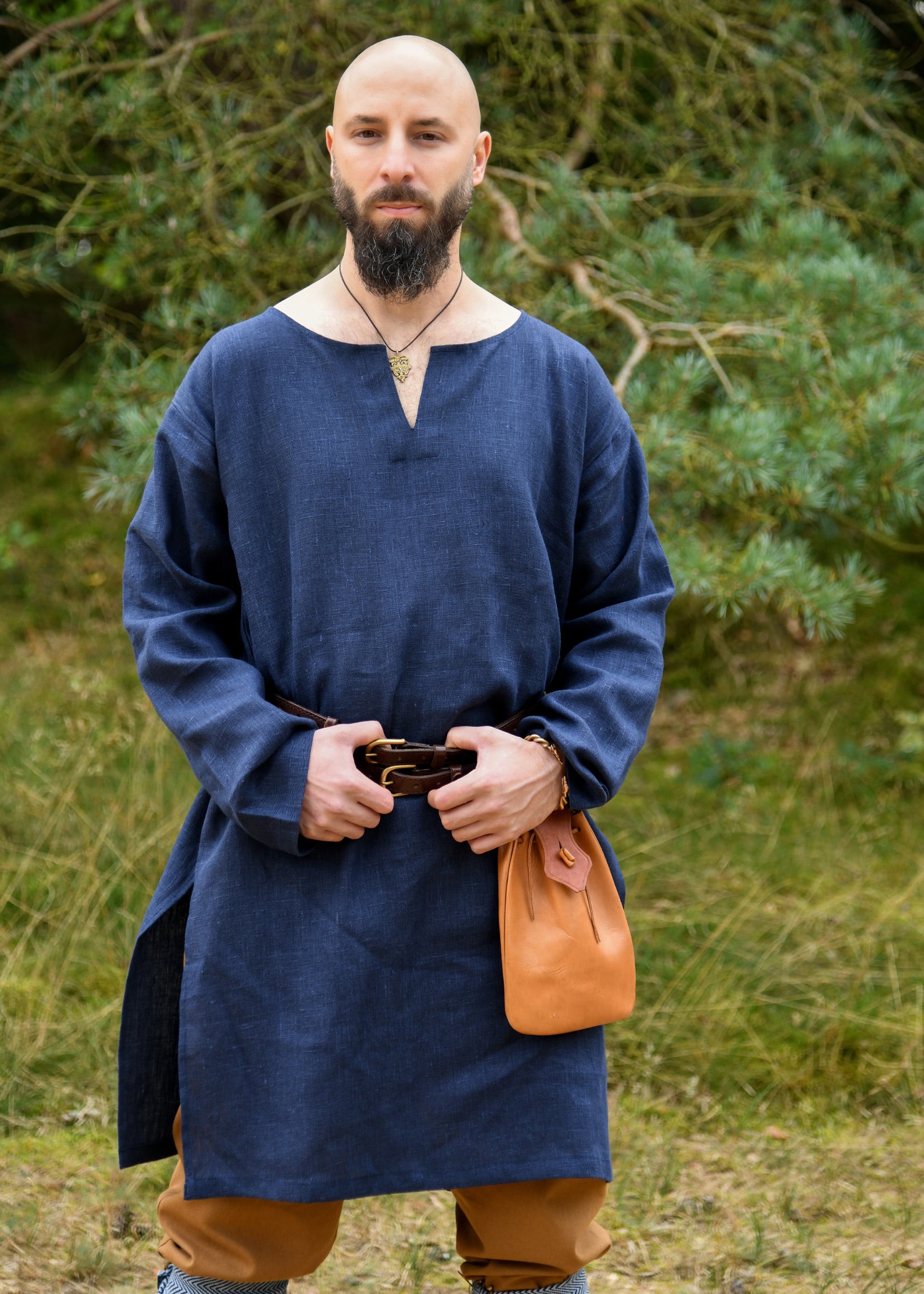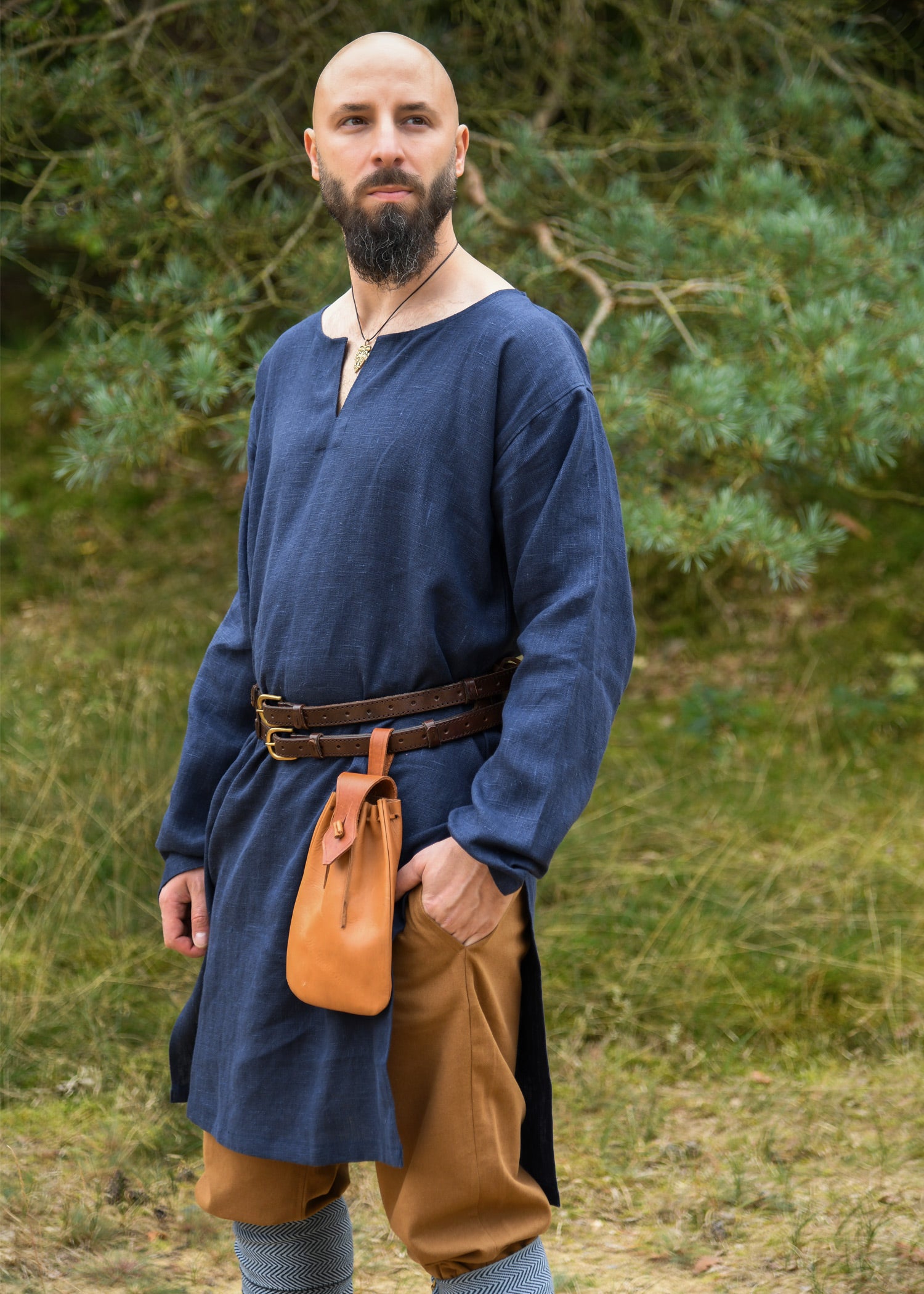Tunics of the Early Middle Ages: essential clothing for nobles and warriors
Tunics in the Early Middle Ages were a staple garment for men and women of all social classes. Their comfortable and versatile design made them the primary attire for both everyday life and battle. From simple woolen tunics for peasants to richly decorated versions for the nobility, every detail reflected the wearer's status and role.
Main types of tunics of the Early Middle Ages
- Viking tunic : Straight cut, with long sleeves and reinforcements on the collar and cuffs.
- Norman tunic : Similar to the Viking tunic, but with greater length and decorative details.
- Battle tunic : Worn over chain mail, it facilitated movement and provided protection from the weather.
- Noble tunic : Made of linen or silk, adorned with embroidery and vibrant colors.
Characteristics of the tunics of the Early Middle Ages
- Natural materials : Wool and linen were the most common due to their strength and comfort.
- Loose and functional design : Allows freedom of movement in daily life and in combat.
- Decorations with embroidery and edging : They indicated social status and region of origin.
- Additional layers : These were combined with cloaks and belts to adapt to the climate.
The tunics of the Early Middle Ages were a symbol of identity and hierarchy in medieval society. If you're looking for replicas of medieval tunics for historical reenactment, collecting, or authentic medieval attire , you'll find period-accurate models at Medieval Store .

